#also how is this the second 2019 film to feature a scene with a woman crying to vivaldi's four seasons in a theatre??
Text
A few sapphic film recs!

Just a few recommendations for sapphic films under 2 hours which may or may not have flown under the radar:
Moonlit Winter / 윤희에게 (1hr 45m, 2019, dir. Lim Dae-hyung)
Professor Marston and the Wonder Women (1hr 48m, 2017, dir. Angela Robinson)
Who's the Woman, Who's the Man / 金枝玉葉 2 (1hr 50m, 1996, dir. Peter Ho-Sun Chan)
Sisterhood / 骨妹 (1hr 37m, 2016, dir. Tracy Choi)
DEBS (1hr 31m, 2004, dir. Angela Robinson)
Farewell, My Queen / Les adieux à la reine (1hr 40m, 2012, dir. Benoît Jacquot)
Bonus - short film: Love Does Human / 사람 하는 사랑 (24 mins, 2019, dir. Oh Seon-ju)
Commentary under the cut!
1. Moonlit Winter / 윤희에게 (1hr 45m, 2019, dir. Lim Dae-hyung) - IMDB | MyDramaList

This movie is about a daughter (Kim So-hye) who finds out about her divorced mother’s (Kim Hee-ae) past with another woman (Katase Jun), and how in encouraging her mother to reconnect, the two finally open up to each other as well. Dry stuff on paper, but there’s more to it: the mother and her former lover didn’t just break up, they were split apart by their families as teenagers and the mother was forced to marry a man against her will. In short, it deals with the aftermath of the typical “bad ending” of older stories featuring WLW characters, wherein schoolgirls in love would be separated and married off to preserve the heteronormative status quo.
Although the queer relationship does not get much screentime at all – the two characters share a single scene, there are no flashbacks, and there’s not even a hug – queerness remains at the heart of the movie. It’s a rare depiction of how the repression of queerness leaves scars on people which affect how they engage with the world, but which also shows that as long as they are alive, there is still hope that those scars can be healed. Also, despite the heavy-sounding subject matter, it’s a very gentle experience: there are no direct depictions of homophobia and no sensationalism, just a little story of human connection unfolding in a snow-cloaked Hokkaido.
2. Professor Marston and the Wonder Women (1hr 48m, 2017, dir. Angela Robinson) - IMDB
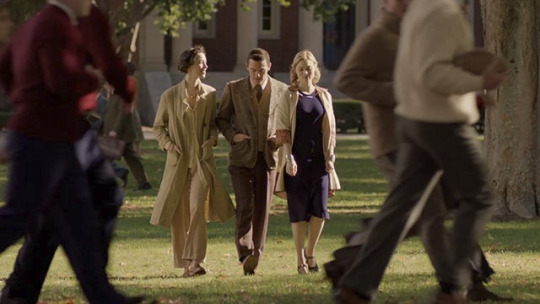
The blurb on IMDB says that this movie is about “psychologist William Moulton Marston (Luke Evans), and his polyamorous relationship with his wife [Elizabeth] (Rebecca Hall) and their mistress [Olive] (Bella Heathcote) who would inspire his creation of the superheroine, Wonder Woman”. As someone who is not particularly drawn to biopics, male protagonists, polyamory, BDSM, or Wonder Woman, I assumed that this movie wouldn’t be my jam and so didn’t watch it until quite a while later – which is when I discovered just how wrong I was.
First, the two women take up just as much of the movie’s focus as Marston. Elizabeth, Marston’s wife and fellow psychologist, is highly intelligent but equally highly-strung; she does not know how to deal with her husband’s attraction to new research assistant Olive, nor Olive’s attraction to both her husband and Elizabeth herself, and this internal conflict (even after the three enter into a polyamorous relationship) features heavily in the story. Second, although it declares itself to be “based on a true story”, the movie is not especially interested in recreating or representing the past. Rather, the historical elements are used as a framework to explore certain ideas: Diana’s Lasso of Truth symbolises how progress and healing must be first founded upon honesty, for example. The polyamory and BDSM is also not at all sordid or sensationalised, but rather presented in a nuanced (though still sexy!) manner. More than anything, this is a movie with a big heart and big ideas, and should be judged on its own merits.
3. Who's the Woman, Who's the Man / 金枝玉葉 2 (1hr 50m, 1996, dir. Peter Ho-Sun Chan) - IMDB | MyDramaList
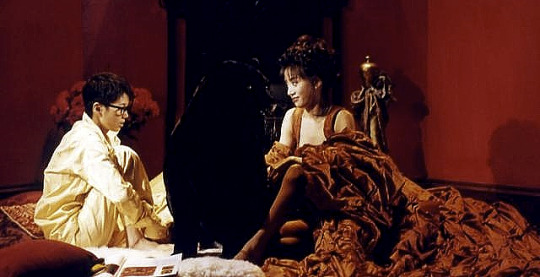
All you need to know going into this sequel of 1994 movie He's a Woman, She's a Man (金枝玉葉) is that main character Wing (Anita Yuen) is a woman who has found both fame and (heterosexual) love while disguising herself as a male idol, and that her relationship with record producer Sam (Leslie Cheung) is known to the general public— although it is perceived as being homosexual in nature due to her persona. At this point, you might be wondering why an M/F romantic comedy is on this list, but this movie is a bit odd in that instead of focusing only on problems such Sam’s internalised homophobia and misogyny (both of which are addressed in the story), one of the new obstacles facing the couple is the female lead meeting female pop star Fong Yim Mui (Anita Mui)… and both starting to fall for each other.
I was surprised at how sensitively Wing and Fong Yim Mui’s respective arcs are handled, especially for a mainstream movie from the 90’s starring two of Hong Kong’s most popular performers at the time. Instead of giving the two women a meet-cute and leaving it at that, a lot of care is put into showing them processing and coming to terms with their feelings in their own time. Romantic and sexual attraction is also highlighted separately, which is refreshing given how they are usually depicted as inextricably linked even now… Obviously Wing and Fong Yim Mui don’t end up together, but their feelings aren’t dismissed and – relative to the narrative constraints – the ending is a warm, optimistic one. Also, Anita Mui gives an absolutely award-worthy performance in one of the scenes with her character and Wing, so fans of her should definitely give this movie a try.
Important note: Although there’s much that’s good about it, Who's the Woman, Who's the Man is far from perfect. Early on, there’s a masquerade party where two of the characters are wearing masks which look like racist caricatures, and the masks are crop up in multiple scenes in the film. More serious is the subplot about a male character who keeps trying to win over a lesbian, culminating in her agreeing to sleep with him once while he’s dressed as a woman (CW: transphobia, homophobia) – though this storyline ends with the man accepting that she really is gay and parting on friendly terms. That said, these problems are already mild compared to the actively hateful transphobic and homophobic jokes present in so many of its contemporaries, so if you’ve watched a 90’s Hong Kong comedy before, chances are that your tolerance level is more than high enough.
4. Sisterhood / 骨妹 (1hr 37m, 2016, dir. Tracy Choi) IMDB | MyDramaList
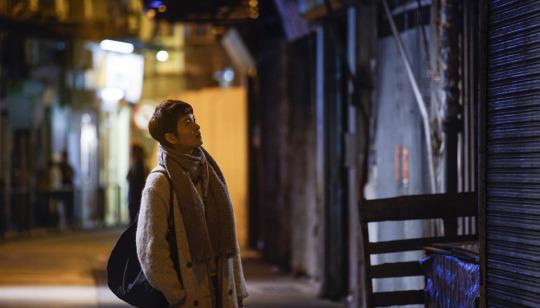
Sisterhood opens with tragedy. Originally from Macau, main character Sei (Gigi Leung) is living quietly in Taiwan with her husband after the 1999 Handover when her life is overturned by a newspaper personal ad informing her that her long-estranged friend and colleague Ling has passed away. The movie is shot through with flashbacks to earlier times, tracking a young Sei (Fish Liew) as she starts doing sex work and is taken under the wing of the more experienced Ling (Jennifer Yu) and her friends. Memories of togetherness and community are juxtaposed against sequences of present-day Sei struggling to navigate her grief, the tensions of the now-fractured friend group, and a Macau that has changed just as much as she has. The acting and script can be clunky in places but the sentiment shines through, especially after the first third, at which point the movie starts honing in on Sei and Ling’s relationship. It’s not a happy story, but nor is it defined by sadness; instead, it posits that the past is not merely to be mourned, that it is instead something that can shape and provide a foundation for the future. I won't talk too much about how queerness figures into this story, due to spoilers, but rest assured that it is present and important!
5. D.E.B.S. (1hr 31m, 2004, dir. Angela Robinson) - IMDB
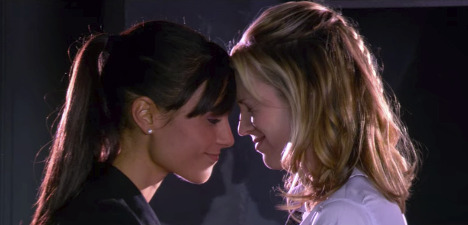
Okay, you've probably heard of this one before if not watched it already, but anyway! This was the first WLW movie I watched, and for a long time, the only one which I actually enjoyed. It’s about an elite spy (well, more like an honours student at spy school) (Sara Foster) and a criminal mastermind (Jordana Brewster) falling for each other, a premise which is just as fun and over-the-top as it sounds. The movie does a great job of mixing action, humor, and romance, and it doesn’t overstay its welcome – it’s got a nice compact runtime and a cracking pace. There’s still nothing quite like it in my opinion, though I’m very welcome to any recommendations in this line (my askbox is open if you have any!).
6. Farewell, My Queen / Les adieux à la reine (1hr 40m, 2012, dir. Benoît Jacquot) - IMDB
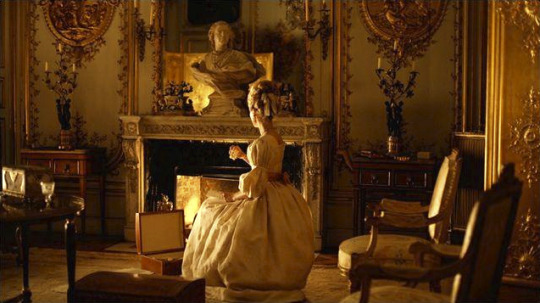
Loosely based on Chantal Thomas’ novel of the same name, Farewell, My Queen is a portrait of French nobility in decline, following maidservant Sidonie Labarde (Léa Seydoux) who is in the service of Marie Antoinette (Diane Kruger). It's a beautiful, lavish production which effectively conveys the perspective of a servant locked in the gilded cage that is Versailles during the French Revolution, and is a rare case of a historical figure as famous as Antoinette being presented as queer in a serious historical drama.
That being said, the queerness is mostly background, coming mainly in the form of Antoinette’s crush on? relationship with? duchess Gabrielle de Polignac (Virginie Ledoyen)— though a case can be made for Sidonie, whose outward opacity belies an unwavering, almost unsettling, devotion to her queen. Also, be warned that the movie has many a dodgy shot of cleavage, and two instances of unnecessary and voyeuristic nudity... but other than that, it really does have gorgeous cinematography.
Fun fact: there really were rumours about Antoinette having a scandalous relationship with the duchess, although these have nearly always been written off as baseless reputation-smearing.
Bonus - short film: Love Does Human / 사람 하는 사랑 (24 mins, 2019, dir. Oh Seon-ju) - MyDramaList
youtube
Some say that the best science fiction puts a spotlight on some part of the human condition, and this short film does just that.
Main character Tae Eun's (Kim Min-ju) girlfriend Joo An (Jang Sam-yi) no longer has a human body: after carrying out a medical operation which transferred her consciousness to a computer system, she now has a web-camera for her eyes, a speaker for her mouth, and control over their home's devices for her hands. And although the change was by Joo An's choice and Tae Eun was supportive, the pair struggle to adjust to this new reality, and are confronted with the need to communicate and to consider each other's perspectives.
Love Does Human has a bit of a slow start, and there were points where I didn't understand why the characters were reacting in a certain way, but it all comes together beautifully in the end. Through its sci-fi premise, viewers are encouraged to think about real-life problems using a different angle, and the movie never gets too heavy. Also, shoutout to some excellent voice work from the two actors - Joo An is performed nearly entirely through voice but she feels deeply human and present, and Tae Eun's actor also has a standout scene featuring some great voice acting. All in all, it's a short film that's well worth checking out (especially since the director has made it available for free, with English subtitles, on Youtube - embedded above)!
#sapphic#lesbian#gay#wlw#wlw media#moonlit winter#professor marston and the wonder women#debs#farewell my queen#love does human#wlw recommendations#list#sapphic films#whos the woman whos the man#金枝玉葉2#sisterhood 2016#骨妹
196 notes
·
View notes
Text

I posted 4,186 times in 2022
That's 590 more posts than 2021!
89 posts created (2%)
4,097 posts reblogged (98%)
Blogs I reblogged the most:
@purlturtle
@mystery-ink
@theomenroom
@loved-the-stars-too-fondly
@jenny-dreadful
I tagged 3,421 of my posts in 2022
Only 18% of my posts had no tags
#fuck - 247 posts
#lmao - 171 posts
#animals - 163 posts
#art - 158 posts
#stories - 151 posts
#omfg - 141 posts
#eels - 128 posts
#goncharov - 102 posts
#the magnus archives - 91 posts
#oh my god - 81 posts
Longest Tag: 139 characters
#lol my college roommate’s dad said ‘’i feel like you’re hiding something bc you keep looking around the room while you talk and not at me’’
My Top Posts in 2022:
#5
Hey how fucking dare Jake just casually say “tell me your feelings and I’ll tell you I need you” IN A SHORT REST WHILE NOT ACTUALLY RP’ING AS HARDWON AND NOBODY COMMENTED ON IT I’M????????????? just casually busting out one of the most romantic lines I’ve ever heard like it’s nothing Jesus Christ
50 notes - Posted November 29, 2022
#4
If I ever write a sex scene that doesn’t involve some element of praise kink, it’d be one of those “things I post to clue my followers in that I’ve been kidnapped” memes
77 notes - Posted February 20, 2022
#3
I lost the post I was trying to reblog about how it’s sexist of fandom to make jokes about the token lady character of a particular media being the Braincell Holder of the male-majority group, but what I was gonna say was the great thing about NADDpod is that in every single campaign the Braincell Holder is absolutely NOT the lady PC under any circumstances. Emily Axford would NEVER
77 notes - Posted June 18, 2022
#2
i need recommendations for some lesbian movies. My wife wants to watching something gay, but is tired of gay men's movies
oh gosh I am so sorry I'm just now getting to this - I was out of town the whole weekend and got back yesterday evening, when my brain was melting out my ears from the heat. without further ado!
I have categorized this list into a few sections:
Well-Made/"Good" Movies I Can Vouch For
Portrait of a Lady on Fire (2019): you have probably heard of this, but in case you haven't, it's a French historical drama about a painter who is commissioned to do a wedding portrait for a reluctant bride-to-be. It's lush, emotional, bittersweet, and breathtakingly shot. Content warnings: mention of a minor character's suicide, brief abortion scene featuring a secondary character, one scene of the leads doing drugs together.
Saving Face (2004): This is a lovely film about a young Chinese surgeon who is juggling her secret relationship with the drama her mother causes. Content warnings: intergenerational trauma.
Carol (2014): Again, you've probably heard of this one - it's another historical drama, this one based on Patricia Highsmith's novel The Price of Salt. A young aspiring photographer is captivated by a mysterious woman named Carol. After Portrait came out I find myself not as enamored of this one (I think Rooney Mara is not very good in it lmao), but it's a lovely film worth a watch. Content warnings: period-typical homophobia, Carol's shitty husband.
The Half of It (2020): From the director of Saving Face, this is a high-school coming of age movie inspired by Cyrano de Bergerac, in which a second-generation Chinese girl ends up volunteering to write love letters to her crush, "from" the jock who is also in love with said crush. Some really beautiful stuff about immigrant Chinese families in here, and I was really touched by the friendship between the two leads. Content warnings: racism, homophobia, bullying, intergenerational trauma.
Professor Marston and the Wonder Women (2017): This is based on the life of William Marston, creator of Wonder Woman, and his partners Elizabeth and Olive. I am given to understand that the relationship between the two women was probably not romantic IRL, but I really love the way the movie treats both the triad and the women as a couple. I also think the BDSM stuff is cute. Content warnings: age gap/power differential romance (two professors and their TA), homophobia including a brief violent attack, brief cancer subplot towards the end of the film.
Summerland (2020): A WWII movie about the bond between a reclusive writer and the young boy she is reluctantly forced to care for due to the London evacuations. I will spoil this for you because it gave me severe anxiety: the lesbians both live to the end, and they get to raise their son together! My main complaint is not enough Gugu Mbatha-Raw. Content warnings: WWII imagery/setting, parent death (offscreen but significant part of the plot), brief child peril.
The Favourite (2018): This is a weird little black comedy about two cousins who are vying to be the favored paramour of Queen Anne in 18th century Britain. It's some fun fucked-up drama. Content warnings: animal abuse/death (toward the end of the film), manipulation, non-consensual drugging.
I Can't Think Straight (2008): I haven't seen this one since college but I remember liking it - it's about two women, one Palestinian and one Indian, who meet and fall in love despite unlikely circumstances. Content warnings: cheating (one character is engaged to a man).
V For Vendetta (2005) - in case you forgot, this has lesbians! Content warnings: torture, attempted sexual assault, hanging, child death, panic attack, homophobia/dead lesbians
Birds of Prey (2020) - Harley Quinn is canonically bisexual! Also I love this movie. Content warnings: cartoonish violence, graphic torture including of a child, child death (implied/heard), implied sexual assault by the villain (of a minor character).
Booksmart (2019): High school comedy about two best friends who decide they're sick of being dweebs and want to go to a cool party before they graduate. I think it's largely delightful and I love the lesbian character's story. However, the subplot with the teacher who has sex with her (19yo) student is BAD and I won't defend it, nor will I judge anyone for wanting to skip based on that. Content warnings: extended non-con drugged sequence (played for laughs/nothing bad happens to them), aforementioned age gap/power differential romance (secondary characters).
But I'm a Cheerleader (1999): Clea Duvall and Natasha Lyonne star in a satire of conversion therapy camps, also featuring young Dante Basco. Personally I think it keeps things light and silly enough not to trigger me with the religious rhetoric. Content warnings: conversion camp setting and corresponding conservative Christian rhetoric, general homophobia, uh, RuPaul is here at one point?
In the Heights (2021): This movie is very much not perfect, chiefly for the colorism in the casting choices. BUT I like that Daniela and Carmen are gay now. Content warnings: racism, prejudice against undocumented individuals, grandparent death.
Movies I Think You Should Watch Maybe - Are They Good? I Couldn't Say!
D.E.B.S. (2004): This is a deeply silly movie about an all-girls' spy school in which the star pupil falls in love with international supercriminal Lucy Diamond, directed by queer icon Angela Robinson and featuring lesbian grandma Holland Taylor as the headmaster. Content warnings: cartoonish (PG-13) gun violence.
Imagine Me & You (2005): This was baby's first f/f movie for me, and so it has a very special place in my heart even though it is Problematic because it's about a lady cheating on her husband with Lena Headey, and also nobody remembered bisexuality exists so they say "lesbian" pretty exclusively and that sucks. Lena Headey and Piper Perabo are so good together though, and I genuinely like everyone in this movie. Content warnings: cheating (one character is married to a man).
Happiest Season (2020): Do not @ me this is MY movie!!! Kristen and Mackenzie are PERFECT. Content warnings: homophobia, manipulative behavior, one weirdly intense interrogation scene with mall cops that frankly should've been cut, mentioned fish death.
A Simple Favor (2018): This movie...it is batshit. If you like trashy drama, you will probably like this movie! Linda Cardellini plays a lesbian artist and I love her so much. Content warnings: manipulation, murder, incest (adult half-siblings not raised together), intense discussion of murder-suicide, gun violence
The Falling (2014): This movie is also batshit and not good, but I need more people to watch it, because I've seen it four times and I have no idea what it's trying to say. It features Maisie Williams and Florence Pugh as British boarding school teens who have an intense "friendship" and then suddenly everyone in the school starts having collective fainting spells. Please, I just need to find the person out there who gets what this movie is doing so they can explain it to me. Content warnings: unexplained medical issues (fainting), seizures, incest (consensual? sex scene), attempted suicide, grief, discussion of sexual assault and trauma therein (secondary character)
A New York Christmas Wedding (2020): This movie is ALSO batshit in a completely different way than the other two, and again, I need someone to explain it to me. It's, uh, sort of It's a Wonderful Life but with a bisexual heroine, and some batshittery along the way? Content warnings: suicide (secondary character), teen pregnancy, weird pro-life vibes, parent death, way too much church, homophobia, Chris Noth
Movies I Haven't Yet Seen Which Have Been Recc'd To Me
Crush (2022)
Pariah (2011)
Ma Rainey's Black Bottom (2020)
Fear Street Trilogy (2021)
The Handmaiden (2016)
149 notes - Posted June 28, 2022
My #1 post of 2022
Wild mass guessing about the theme of the Dimension 20 sidequest being announced tomorrow, loosely ranked from most to least likely with reasoning:
Fairy tale remix (this has been thrown around as a suggestion in fandom before, just seems like a fun idea)
Superheroes (potentially with the Masks system, though I know Chapter and Multiverse is doing a shorter campaign with that system right now)
Unsleeping City spin-off, possibly prequel with mentioned characters (not sure if Brennan would want someone else DMing in this world, I just think it would be neat)
Horror survival campaign (PVP/permadeath more likely with guest players, but might be too intense/dark for the D20 brand. BUT Brennan just DM’d EXU Calamity and was a goddamn nightmare over there)
Mice and Murder s2 with partial or all new cast (possibly new DM, but unsure how popular s1 was comparatively)
Misfits and Magic s2 (Erika and Aabria are very busy but four episodes could’ve been filmed in a couple weekends at most)
Real Housewives RPG DM’d by Izzy Roland (funniest possible option; extremely unlikely)
Warrior cats (I lied. this is the funniest possible option)
206 notes - Posted July 20, 2022
Get your Tumblr 2022 Year in Review →
#LMAO at goncharov sneaking in there at the last second#also delighted ppl like my naddpod shitposting
3 notes
·
View notes
Photo
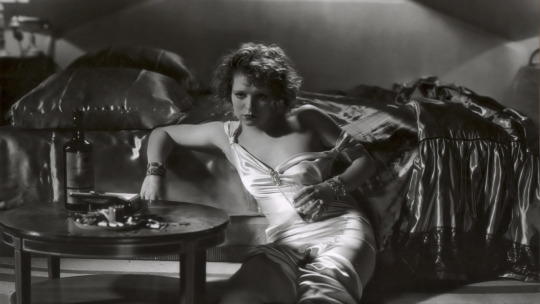
Savage Cinema.
From anarchists and adultery to milk baths and massacres, Matthew Turner shares five of the weirdest and wildest highlights of Hollywood’s pre-Code era, as #PreCodeApril comes to a close.
Pre-Code April was directly inspired by Noirvember, a month-long celebration of noir cinema instigated by Marya Gates (Oldfilmsflicker). I did Noirvember for the first time in November 2019, really enjoyed it, and thought it would be great to do the same thing for pre-Code movies. Although I’ve watched most of the classic 1930s films, I realised there were a huge number of pre-Code films I’d never seen (of my Letterboxd list of over 900 Pre-Code films, I have only seen 200).
As a sucker for a bit of wordplay, no matter how tenuous, I picked April partly because it’s six months away from Noirvember and partly because of the shared “pr” sound in April and Pre-Code. I’ve been absolutely delighted by the response—the #PreCodeApril hashtag on Twitter is a daily treasure trove of pre-Code-related joy, but I was genuinely thrilled to see the response on Letterboxd (here is my watchlist for the month). It’s been a real pleasure to see pre-Code movies constantly popping up in my ‘new from friends’ feed. My hope is that it’ll be even bigger next year—and that maybe TCM will want to get involved, the way they do with Noirvember.
Produced between 1929 and 1934, pre-Code cinema refers to films made in a brief period between the silent era, and Hollywood beginning to enforce the Motion Picture Production Code censorship guidelines (mandatory enforcement came in from July 1934). The “Code” in question was popularly known as the Hays Code, after then MPPDA president Will H. Hays. As the depression set in and box office declined, theater owners needed fare that would drive cinema-goers to the movies. It was a wild time to be a scriptwriter; they threw everything at the page, designers added even more, and actors played out the kinds of scenes, from the suggestive to the overt, that would otherwise be banned for decades to come.
The following five films demonstrate some of Hollywood’s craziest pre-Code excesses. They’re still jaw-dropping, even by today’s standards, and notably give female characters an agency that would be later denied as the Christian morals of the Code overruled writers’ kinks.

Madam Satan (1930)
Directed by Cecil B. DeMille, written by Elsie Janis, Jeanie Macpherson and Gladys Unger
A critical and commercial flop in 1930, Cecil B. DeMille’s utterly insane musical comedy stars Kay Johnson as a straight-laced wife who plots to win back her unfaithful husband (Reginald Denny) by seducing him at a costume party, disguised as a mysterious devil woman. The location of this party? Oh, nothing too fancy, just on board a giant zeppelin. (“Madam Satan or: How the Film gets Fucking Crazy on the Blimp,” as Ryan reviewed it.)
Madam Satan is not by any stretch of the imagination a good movie (the editing alone is laughably bad), but as a piece of pre-Code craziness, it really has to be seen to be believed. Co-written by a trio of women and set in just three locations, it goes from racy bedroom farce to avant-garde musical to full-on disaster movie after a bolt of lightning hits the blimp.
The film is justly celebrated (in camp classic circles, at least) for the wildly over-the-top costumes paraded in the masquerade ball sequence, but there’s weird outfit joy everywhere you look. Keep an eye out for an enterprising extra who’s come dressed as a set of triplets.

Call Her Savage (1932)
Directed by John Francis Dillon, written by Tiffany Thayer and Edwin J. Burke
Adapted from a salacious novel by Tiffany Thayer, Call Her Savage was former silent star Clara Bow’s second-to-last film before her retirement at the age of 28. She plays Texas gal Nasa Springer, who’s always had a “savage” temper she can’t explain. In the space of 88 minutes she goes from wild teenager to jilted newlywed to young mother to prostitute to wealthy society girl to alcoholic before finally (it’s implied) settling down with her Native-American friend after discovering that she’s half-Native-American, something the audience has known all along.
Bow’s performance is frankly astonishing, to the point where you simply can’t believe what you’re seeing from one moment to the next. Sample scenes see her savagely whipping both a snake and her Indian friend, smashing a guitar over a musician’s head and violently wrestling her Great Dane… and that’s all in the first five minutes. She’s also frequently in a state of near undress throughout—one funny scene has her maids chasing her with a dressing gown because they’re afraid she’ll run down the street in her négligée.
The rest of the film includes alcohol, adultery, strong violence, attempted rape, murder, syphilis (not named, but heavily implied) and baby death. It’s a veritable smorgasbord of outrageous content and Bow is pure dynamite throughout. The film is also noted for being one of the first on-screen portrayals of homosexuality, when Nasa visits a gay bar in the Village frequented by “wild poets and anarchists”.

Smarty (1934)
Directed by Robert Florey, written by Carl Erickson and F. Hugh Herbert
This deeply problematic sex comedy features pre-Code stars Joan Blondell and Warren William (often nicknamed ‘The King of Pre-Code’) at their absolute filthiest. Blondell plays Vicki, a capricious, happily married wife who gets an obvious kick out of taunting her husband, Tony (William). When he cracks and slaps her at a party, she divorces him and marries her lawyer, Vernon (Edward Everett Horton), whom she also goads into slapping her in a deliberate ploy to win back Tony.
Essentially, Smarty hinges on Vicki liking rough sex and it’s completely blatant about it, ending with her sighing “Hit me again” (the film’s UK title!) as they sink into a clinch on a couch, a rapturous expression on her face. It’s a controversial film because on the surface it looks like it’s condoning domestic violence, but it’s very clearly about Vicki’s openly expressed sexual desires—she wants to be punished and dominated, she just has a rather dodgy way of getting what she wants.
It might be unsophisticated, but in some ways Smarty is remarkably ahead of its time and ripe for rediscovery. To that end, it would make a fascinating double bill with Stephen Shainberg’s Secretary (2002). Oh, and it’s also chock-full of lingerie scenes (like most pre-Code films), if you like that sort of thing.

Massacre (1934)
Directed by Alan Crosland, written by Sheridan Gibney, Ralph Block and Robert Gessner
Several pre-Code films (notably those made by Warner Bros) took a no-punches-pulled approach to their depiction of social issues, and star Richard Barthelmess actively sought out such projects. Here he plays Joe Thunderhorse, a Native American who’s become famous on the rodeo circuit. When he returns to his tribe to bury his father, he ends up fighting for their rights, taking on corrupt government officials and religious authorities.
Massacre is fascinating because on the one hand it’s wildly insensitive—Barthelmess and co-star Ann Dvorak are both cast as Native Americans—but on the other, it burns with a righteous fury and does more than any other Hollywood film (before or since) to champion the rights and highlight the injustices dealt out to Native Americans. That fury is encapsulated in a horrifying and rightly upsetting rape scene (it happens off-screen, but the cuts leave you in no doubt) that the film handles with surprising sensitivity.
In addition to being a passionate fight against racism and social injustice, the film also has some genuinely shocking sexual content. Most notably, Joe is seen making love to a rich white woman (Claire Dodd, who’s also in Smarty) who has an obvious sexual fetish, flaunting him in front of her friends and making a shrine in her room with Native-American paraphernalia.

The Sign of the Cross (1932)
Directed by Cecil B. DeMille, written by Waldemar Young and Sidney Buchman
Yes, this is Cecil B. DeMille again, but no list of weird and wild pre-Code films would be complete without the jaw-dropping ancient Rome epic, The Sign of the Cross. Adapted from an 1895 play by Wilson Barrett, it stars Frederic March as Marcus Superbus (stop sniggering at the back there), who’s torn between his loyalty to Emperor Nero (Charles Laughton) and his love for a Christian woman (Elissa Landi), while also fending off the advances of the Emperor’s wife, Poppaea (Claudette Colbert).
The film is racy enough in its sexual content alone: highlights include the famous scene of Claudette Colbert taking a nude milk bath and an erotic “lesbian” dance sequence, where Joyzelle Joyner’s “most wicked and talented woman in Rome” does ‘The Dance of the Naked Moon’ at Frederic March’s orgy, trying to tempt Landi’s virtuous Christian, to the obvious arousal of the gathered guests.
However, it’s the climactic gladiatorial-arena sequence that will leave your jaw on the floor. Lasting around twelve minutes, it includes: someone getting eaten by a tiger, a tied-up, naked women being approached by hungry crocodiles, pygmies getting chopped up by female barbarians, elephants stomping on heads, a gorilla approaching a naked woman tied to a stake, a man getting gored by a bull, and gladiators fighting to the death, complete with blood and gory injury detail.
The whole thing is genuinely horrifying, even for 2021. Best of all, DeMille pointedly critiques the audience (ourselves included), by showing a series of reaction shots ranging from intense enjoyment to abject seen-it-all-before boredom.
Matthew Turner (FilmFan1971) is a critic, author, podcaster and lifelong film fanatic. His favorite film is ‘Vertigo’. The films in this article are also listed here: Five of the Pre-Code Era’s Most Outrageous Films.
#preCodeApril#pre code april#precode april#hays code#mppa code#cecil b demille#clara bow#matthew turner#letterboxd#1930s films#1920s films#depression films
42 notes
·
View notes
Text
Overlooked Bernard Herrmann Scores By Jessica Pickens
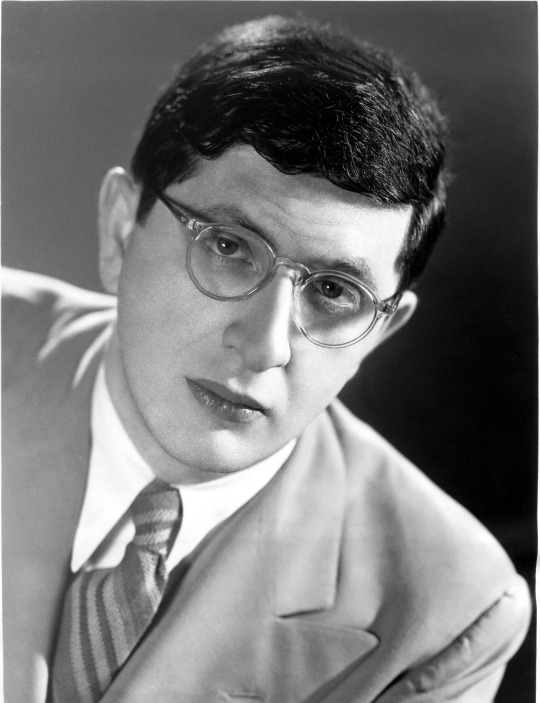
His name is synonymous with staccato violin notes that remind audiences of knife stabbing and have made many reluctant to take a shower. Composer Bernard Herrmann is the master behind iconic scores for films like THE DEVIL AND DANIEL WEBSTER (’41) and PSYCHO (’60). The Academy Award-winning composer scored the two films that are often argued to be the best of all-time: CITIZEN KANE (’41) and VERTIGO (’58). His work continues to be reused in pop culture, from his whistling TWISTED NERVE (’68) theme used in Quentin Tarantino’s KILL BILL: VOLUME 1 (2003) to Lady Gaga using part of VERTIGO’s prelude in her “Born This Way” music video.
Known best for his collaborations with directors Alfred Hitchcock and Orson Welles, other works of Herrmann’s often go overlooked. Below are a few of his scores that are less often discussed.
JANE EYRE (’43)
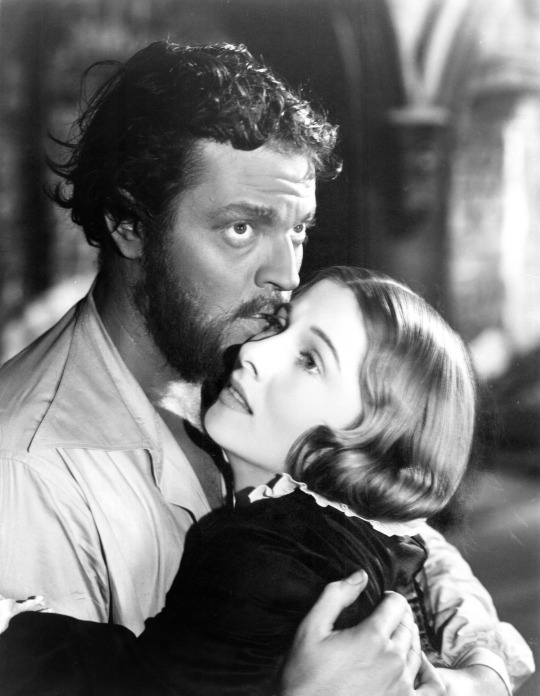
In this adaptation of Charlotte Brontë’s novel, Jane Eyre (Joan Fontaine), who is hired by the wealthy Edward Rochester (Orson Welles), works as the governess for Rochester’s daughter which leads to her discovering secrets in the house. “On a project like ‘Jane Eyre,’ I didn’t need to see the film beforehand. One just remembers the book,” Herrmann said in a 1975 interview, discussing this film’s score.
JANE EYRE was Herrmann’s first project with 20th Century-Fox, which started a 19-year partnership with the studio and a long friendship with composer and Fox music director Alfred Newman. Fox studio head Darryl F. Zanuck initially sought composer Igor Stravinsky to score the film, but negotiations fell through. Producer David O. Selznick and Welles were the driving force behind hiring Herrmann for the project, according to Herrmann’s biographer Steven Smith.
Herrmann’s score has a dark, gothic feel that matches the theme of the novel. New York Herald Tribune composer critic Paul Bowles described the score as “gothic extravagance and poetic morbidities. It contains some of the most carefully wrought effects to be found in recent film scores,” Bowles wrote. According to Smith, Herrmann called it his first “screen opera.” The score foreshadowed work on another Brontë project — his “Wuthering Heights” opera that didn’t see a full theatrical performance until 2011.
ON DANGEROUS GROUND (‘51)

Directed by Nicholas Ray, an adaptation of Gerald Butler’s book Mad with Much Heart. The film follows a rough city police officer, Jim Wilson (Robert Ryan). After Jim is too violent with a suspect, he is sent to a rural area as punishment. His job is to help with a manhunt for the murderer of a child. A blind woman, Mary Malden (Ida Lupino) is the sister of the murderer, and she tries to convince Jim to protect her brother.
ON DANGEROUS GROUND is one of Herrmann’s few film noir scores. Film noir expert and host of TCM’s Noir Alley Eddie Muller said, "Herrmann's score is one of the most distinctive crime scores of the era." In a June 2019 introduction of the film, Muller noted “Herrmann’s score is unlike any other music written for film noir. A dramatic clash of brass, strings and percussion that goes a long way to unify the film’s unusual — almost schizophrenia — structure.”
Herrmann admired Ray’s storytelling and engineered a creative score that illustrated good and evil. For Lupino’s character, Herrmann used the viola soloist Virginia Majewski, who Herrmann advocated to have on-screen credit. Herrmann also had the rare freedom to compose, orchestra and conduct the entire score. The most notable cue is “The Death Hunt,” that has a driving, frantic tempo and can be compared to his later NORTH BY NORTHWEST (’59) score. Muller noted that to make sure “The Death Hunt” cue was effective, Herrmann fought to have the sound mix corrected during the scene so that the barking dogs wouldn’t drown out his score.
THE SNOWS OF KILIMANJARO (1952)
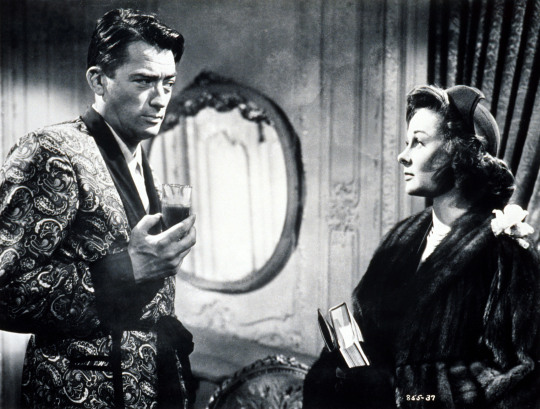
Based on an Ernest Hemingway short story, Gregory Peck plays Harry, a novelist who uses his earnings to travel. While on safari in Africa, Harry suffers an injury that results in a deadly infection. As he lies dying, he thinks back on his life and past romances, and his safari companion Helen, played by Susan Hayward, nurses Harry through his illness.
While some of Herrmann’s most famous scores drive thrillers and adventures, scores like THE SNOWS OF KILIMANJARO show he can create beautiful, gentle and charming tunes. His cues are dreamy and wistful, matching the mental state of the ill Harry, whose mind travels to the past while on his death bed. Herrmann’s cue entitled, “The Memory Waltz,” is particularly dreamy. Herrmann said he tried to create music of “a highly nostalgic nature” as a man dies and deals with his “emotional past.”
On the film’s release, New York Times film critic Bosley Crowther praised Herrmann’s score. “For it is Mr. Herrmann’s music, singing sadly and hauntingly, that helps one sense the pathos of dead romances and a wasted career. A saxophone and a piano in a Paris studio, an accordion on an old Left Bank bar and an arrogant guitarist in a Spanish café—these are also actors in the film. Perhaps they come closer to stating what Hemingway had to say.”
MARNIE (1964)
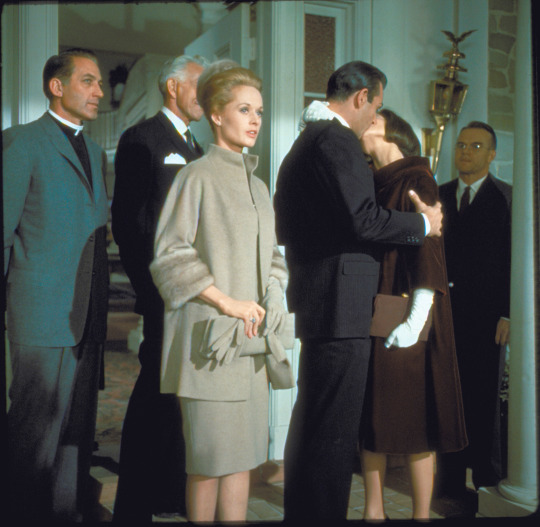
Marnie (Tippi Hedren) is a thief who suffers from psychological trauma of her past, which comes to a head after she marries a widower (Sean Connery) from a wealthy Philadelphia family who does not readily accept her. MARNIE was the end of an era. It marked the last of seven films that Herrmann collaborated on with director Alfred Hitchcock on, beginning with THE TROUBLE WITH HARRY (’55).
Much had changed for both Herrmann and Hitchcock by 1964, including how they were both viewed by Hollywood executives. Herrmann and Hitchcock were being pressured to be more “hip” for 1960s audiences. The studio even urged Hitchcock not to hire “old-fashioned” Herrmann. But if Hitchcock did hire Herrmann, they encouraged him to also have a title pop song, according to Smith. The film was a box-office failure — Hitchcock’s first failure in many years. Today, the film is now appreciated by audiences, but Herrmann’s score still is often overlooked when compared to other Hitchcock titles.
The main title of MARNIE features blaring horns, which sound haphazard against more melodic violins — illustrating the mix of trauma and beauty. A notable cue is “The Foxhunt,” which begins with a jaunty, almost cheerful, tune filled with horns and violins. But the cue turns more haphazard and frantic as it continues. While this was Herrmann’s last completed score for Hitchcock, Herrmann started work on TORN CURTAIN (’66) but was replaced due to artistic differences.
IT’S ALIVE (’74)

The Davies family (Sharon Farrell and John P. Ryan) are expecting their second child. But when their baby is born, he is a monster who kills anyone in his path. The 1970s marked a new era for Bernard Herrmann. He began working with younger filmmakers who appreciated his work of the past. These included Martin Scorsese and Brian De Palma. One of these collaborations spawned a friendship with director of IT’S ALIVE, Larry Cohen, who cited Herrmann as a major influence in his career up until his death in 2019.
Herrmann enjoyed the experience with his film because he enjoyed working with Cohen. To add to the eerie, creepy vibe of the film, Herrmann incorporated a Moog synthesizer into the score. He also uses a viola for a mournful note, according to Smith. Herrmann also had fun naming his cues, such as “The Milkman Goeth” when the baby kills the milkman.
Herrmann was set to work with Cohen again for the film GOD TOLD ME TO (’76), but Herrmann died in 1975 before he could begin.
#Bernard Herrmann#scores#music scores#compositions#theme songs#Vertigo#Marnie#Alfred Hitchcock#Larry Cohen#Orson Welles#Gregory Peck#Ida Lupino#TCM#Turner Classic Movies#Jessica Pickens
82 notes
·
View notes
Photo

Translated interview
Adèle Haenel: 'Sex in cinema is usually quite pathetic’
Wenke Husmann, in: Die Zeit, 31st of October 2019
Additions or clarifications for translating purposes are denoted as [T: …]
Our understanding of art? Patriarchal! Eroticism in cinema? Stunted! The actress Adèle Haenel about her new film ‘Portrait of a Lady on Fire’.
In the film ‘Portrait of a Lady on Fire’, the young aristocrat Héloïse literally catches fire. Around 1770 she falls in love with a young painter, who is supposed to portray her. The role of the shy former convent student seems unusual for Haenel at first glance, who otherwise plays very assertive female characters: an AIDS activist in ‘120 BPM’, a martial artist in ‘Love at First Fight’, a doctor who solves a murder in ‘The Unknown Girl’. But Haenel also interprets the role of the muse as a very active one. The actress had her breakthrough in 2007 at the age of 18 with ‘Water Lilies’, the debut film by film-maker Céline Sciamma. The two were a couple for years. ‘Portrait of a Lady on Fire’ is their second collaboration, which was awarded the Best Screenplay (for Sciamma) at the Cannes Film Festival.
Haenel speaks German very well. She learned the language almost perfectly for Chris Kraus' feature film ‘The Bloom of Yesterday’. However, whenever she speaks German, she will always be so categorical, Haenel warns, and after a very German expletive slips into the conversation, she switches to French.
ZEIT ONLINE: In ‘Portrait of a Lady on Fire’ you play a restrained woman at first. Your Héloïse is supposed to be portrayed by a painter. She is the more experienced, a self-assured artist you fall in love with. But then you reinterpret the role of the muse.
[T: Short bio of Adèle and description of the film is inserted here, but I didn’t translate these, as y’all know everything already 😏]
Adèle Haenel: It's about equality. I believe that the role of the muse is in fact active - and as important as the official role of the artist.
ZE: What is the active part or equality in the relationship between you being the portrayed and the painter? And what's new about it?
AH: I think in art history, being a muse was the role that women were allowed to play. That's why men said, ‘Oh, it's a passive role, the muses are just in the room, and we're dreaming and fabricating great ideas in our heads.’ It was their way of saying that as men, they are the only ones who create art. That's Scheiße [T: 💩 💩 💩] in my opinion. I’m sorry. Whenever I speak German, I am always a bit more categorical. But that’s the way it is.
(Continues the conversation in French)
I believe, however, that muses have always been active. They were just not presented like that. This also has a lot to do with a certain notion of art. Art is not just an ideal sphere that comes down to earth through an artist who is both absolute and ingenious. Art is created by questioning your own choices over and over again, as well as the reasons that led to them. Thus, there is something sacred and something entirely unholy in art. Questioning postulates, constantly questioning your own work, makes art powerful. And that is much more the result of collaboration than of anything else.
ZE: In this case, collaboration is based on love. Muse and artist are on equal terms. Your connection acts like an engine and unleashes the creativity of the artist. Is that the reason why the first portrait that the painter Marianne made of you as Héloïse is technically good but rather conventional? [T: the interviewer uses ‘not befitting’ here]
AH: It's not even about the progression, where only love makes art better, but it’s actually about the process. That's why you constantly ask yourself questions. Of course, at some point a portrait will come out, but in the film it’s not about whether that’s a good thing or not in the end. The problem of the first ‘failed’ portrait is that it avoids any questions. It does not ask exactly: Who is this person? What attitude did the painter take towards her? Does the model have an essence that we try to capture and bring to the canvas? Or is it just about capturing a specific moment? At this point, the collaboration begins. My character Héloïse begins to question Marianne, the artist, ‘What's that supposed to be?’ And when Marianne answers, ‘That's the way to do it,’ Héloïse retorts, ‘What do you mean, that's the way it is done, how do you find yourself in it, what's your attitude towards it?’ And you cannot just take that stance, you have to feel it.
ZE: Is this relationship comparable to what you have as an actress with the director Céline Sciamma?
[T: The above was taken from a translation on the Teller Report website and revised where necessary, my own translation continues below.]
AH: Yes, absolutely. Our collaboration is based on that idea. There are also parallels in terms of content, because painting in this film also has a lot to do with cinema. As it’s also about sequence, scene and so on. The screenplay was very detailed. Improvisation as a method wasn’t intended. But I had a certain amount of freedom to shape my character. The point wasn’t to do this behind closed doors, but the idea was developed in exchange to centre my character around the gaze and into three phases: At the beginning of my journey, I saw myself more as an object, then there was the phase of questioning, and at the end I’m more of a subject. This means that I used my face like a mask at the beginning of the film, very solemn, almost sacral, with little emotion, reserved. The warmer Marianne’s gaze becomes at Héloïse, the more I change the way I’m acting. I become more active and animated. I gave myself a very clear structure. Céline went with this kind of idea. And then we start to discuss about specific and precise things.
ZE: That seems quite practical and unpretentious.
AH: Oh, I’m a very impatient person and get annoyed very quickly. That’s why I can’t stand some of the questions that I get (mimics a stupid tone): ‘How do you endure just being looked at the whole time?’ I do retort then: ‘Have you even seen the film? It’s about the exchange of gazes!’
ZE: There is a narrative framework in the film, where Marianne remembers this love several years later. It’s about the impact of that encounter. How important is such an echo for the arts?
AH: You could say that every human being contains something like an eternal truth inside of them, but that this cannot manifest in a person in its pure form. The potential is there. So, you can develop, change, grow. It’s almost our responsibility to become a better [T: bigger is stated here] person, who exhausts all possibilities to become what makes us human. A romantic relationship [T: love affair…] also makes us feel the possibility to become someone else, more than what we were before. I’m thinking in particular of Spinoza in this context.
ZE: In short, he talks about the necessity of individuals to evolve so that they become more perfect. [T: ‘Vollkommenheit’ is difficult to translate, but I understand that Spinoza meant that this is the ideal state of being, see: The Ethics, Part 4. Of Human Bondage, Or The Strength Of The Emotions, Preface]. Looking at your career, it seems that you and film-maker Céline Sciamma, who was your partner for a long time, also helped each other very much in that sense to evolve.
AH: Céline and I have an extremely close connection and always had an intense intellectual exchange with each other. And an intense emotional exchange, but of course that changes over time. When it comes to what I said before about the search for and questioning of what’s underneath, and how we make choices in terms of our work, then Céline and I understand each other well. We agree about the questions and how we can communicate about them.
ZE: The film takes place around 1770. Back then, the first female artists’ associations were found such as the school of Adélaïde Labille-Guiard. Marianne also worked in such an art school. It was only a few years that women could work as painters. Before and after, female artists could only do that in a limited capacity. Why was that?
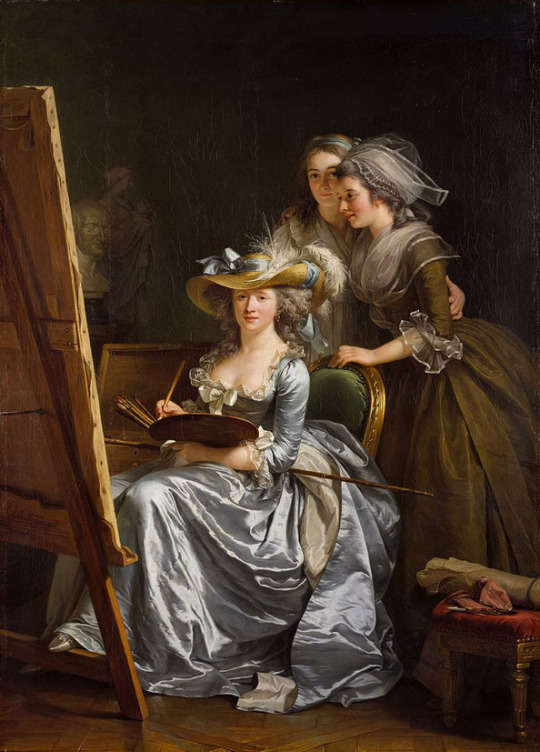
Adélaïde Labille-Guiard, Autoportrait avec deux élèves (1785) © Metropolitan Museum of Art, New York
AH: You get the impression that the female gaze is somehow threatening for male colleagues, that’s why they always tried to ban it. And besides, that is still the case.
ZE: How?
AH: Because some kind of natural order is being postulated. We have very much internalised this patriarchal order, in our intimacy, our desires, in everything. Indeed, challenging this perceived natural order is dangerous, because the entire patriarchy virtually depends on this everywhere. The trick to avoid answering questions that women are asking is in pretending that women really don’t have any reason to ask these kind of questions: They are doing well after all. If it wasn’t that pathetic, it would be really funny.
[T: Two of the below bits were extracted (for ease of reading) from @hedawolf‘s fantastic gifset on Adèle smashing the patriarchy, please head over and show some love.]
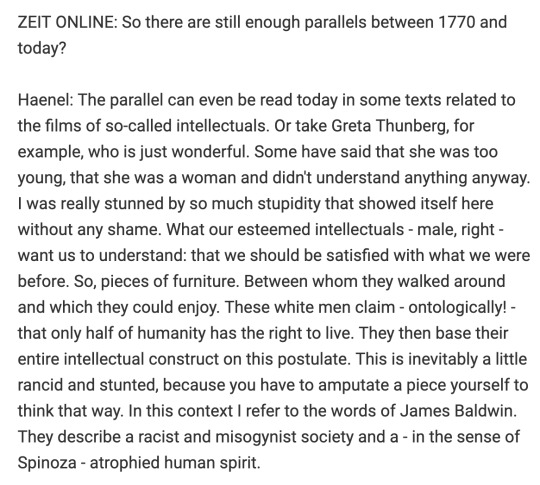
ZE: It seems that many big film festivals are now more open to show films that are about interesting and diverse female characters. Aren’t there more of these stories these days?
AH: Indeed, the problem has now come to the surface of society – two years after the Weinstein affair and #MeToo. You can see the facts. These are hilariously pathetic: 100 per cent of women, who use public transport in Paris, have experienced violence or abuse. 100 per cent! You always hear: ‘No, not all men are like that.’ Yes, of course. But all women have experienced this. And men also feel it. They’ve started to question the structures, in which this was possible, and in which they also lived for a long time. They also question their own behaviour. It’s not about locking up all men in a cage, but that we all evolve. It will make us all freer. But you have to let go of your little privilege of always being in charge. I understand that this is tough. [T: 😏]
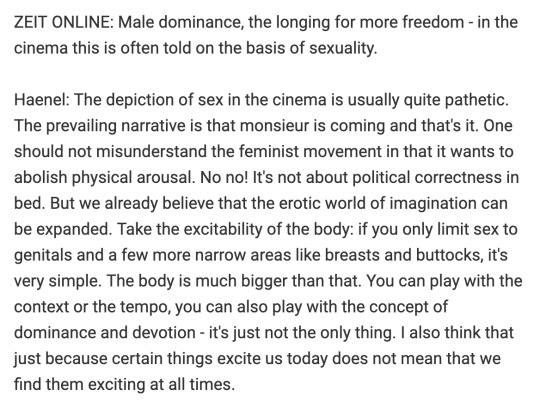
ZE: You’ve really shown us one of the most wonderful scenes on this topic in your film, without men.
AH: This scene is sexy, inventive, created in collaboration – we were also quite satisfied with it. That’s why I was so happy at the premiere in Cannes: There are 2,000 people in the audience, who will see something completely different.
#Die Zeit#October 2019#German interview#NGL this was tough to translate#But would I do it again#YES#Adèle Haenel#was not amused in this interview#about male privilege#and worse#Portrait of a Lady on Fire#Céline x Adèle#for life#Relationship goals#Intellectual and emotional#My translation#long post
169 notes
·
View notes
Text
Wakana e-onkyo Interview English Translation
Note: The first interview with Wakana regarding her cover album. Some juicy details so be sure to check it out!! A little highlight: Hitoshi Konno provided his violin playing for the album!! As always, take everything you read with a grain of salt, my Japanese is by no means perfect. If you want to use this translation or parts of it, be sure to CREDIT me and LINK to this post.
■ SPECIAL INTERVIEW ー with Wakana
Wakana debuted in 2008 as a member of Kalafina. In February 2019 she made her debut as solo singer. Her cover album "Wakana Covers ~ Anime Classics ~" has just been released. It features anime songs in a classic arrangement. Be smitten by Wakana’s charming and expressive vocals, she adjusts her voice to fit the mood of each song. Also pay attention to the unique sound which perfectly conveys the image the different arrangers envisioned. We talked about the songs, her singing, the arrangements and the overall sound.
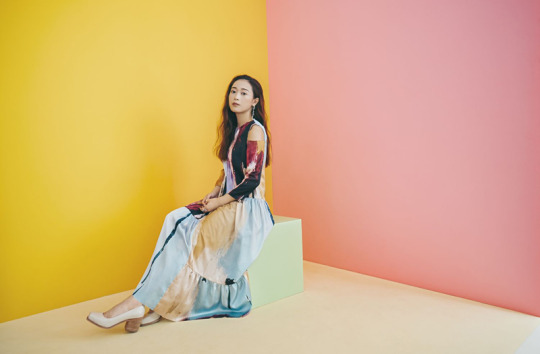
── I think everyone has long been hoping for you to release an album with the concept of covering anime songs with a classical arrangment. What inspired you to pick this particular timing?
Wakana: It was partly because I appeared in my producer’s event "Satoshi Takebe Premium Duo Session Special Vol.9 Satoshi Takebe x Wakana" last November. Takebe-san suggested we should do some covers and I told him I would love to sing some Ghibli songs. That’s how we ended up performing a Ghibli medley which was a lot of fun. Having had that amazing experience, I was planning to do a series of live performances starting this spring where I would cover anime songs in collaboration with a female group called 1966Quartet.
── Unfortunately all plans for spring this year were ...
Wakana: Yes, the live was cancelled before it even got announced. However, I had planned to hold the second instalment of that concert series in December anyway so we decided to just start from there.
── So were you planning to announce the release of the album during the spring live and then accompany the release with the winter live! Was it supposed to be like that?
Wakana: Actually, at the beginning, it was only a live project, I had no plans to release an album. However, during the stayhome period while I was filming videos for my fan club, I asked the fans, "are there any songs you want me to sing?" There were many people who mentioned anime songs, especially Ghibli songs. Needless to say, I loved all the suggetions and I realised that fans would probably be very happy if I released an album in advance of the live. So, while secretly starting the album production, I uploaded some covers on YouTube to get everyone excited. Eventually I was able to announce that, “yes, I am actually working on an album!”
── When it comes to the production of an album like that, the most difficult thing is selecting songs.
Wakana: If the choice had been up to me only the album would be full of Ghibli *laughs*, in order to prevent that I gathered the opinions of everyone around me and this is how we ended up with the final tracklist. For example, I came up with the idea to include a "Doraemon" song and some newer pieces from Makoto Shinkai movies but "Yatsura No Ashioto No Ballade" and "Get Wild" are songs that I wouldn't have suggested myself. I didn't think I would ever cover a song like "Get Wild".
── With so many Ghibli songs to choose from wasn't it particularly difficult to decide which songs to include in and which songs to give a pass?
Wakana: It was!! For example, I was adamant about having “Kaze no Toorimichi” on the album but that forced be to remove “Teru no Uta” from my list because both songs have a similar atmosphere. Then there were songs like “Kimi wo Nosete”. When I performed it together with Takebe-san at this live it left such a strong impression on me. Plus, I have always liked it so I KNEW I had to have it on the album. In fact, this song came to my mind first when thinking about the selection of songs for this album, I was literally crying removing song after song from my list of candidates but I comforted myself with the thought that I would eventually use all those songs for my live performance in December!
── How did you arrange each of the songs once you managed to select them?
Wakana: I asked three arrangers to help me this time, Shin Hashimoto, Miki Sakurai and Shu Kanematsu. According to the image I wanted to convey with each song, I gave it to one of my three arrangers. We held many remote meetings where I first talked about the image I had in mind for the individual songs and in response to that, the arrangers sent me their suggestions... Everyone came up with absolutely wonderful arrangements that go far beyond anything I could have ever imagined!
── I think that deciding on the key is also a problem for a cover song. Did you decide that after consulting with your arrangers?
Wakana: It's not as simple as to just change a male singer's song into a key that is easy for women to sing, after all, you don’t want to ruin the atmosphere of the song by changing the key too much. To begin with I sent sample recordings of me singing certain patterns for each song to the arranger and then arranger would suggest a key they found fitting. I asked them to send me accompaniment that matched their preferred key and then I re-recorded my singing with their accompaniment to get a feel for the overall atmosphere. So with that sort of exchange between myself and the arrangers we selected the perfect key that would suit each song.
── When you say that you don’t want to ruin the atmosphere of a song by changing the key, what exactly do you mean by that and could you name a song where this applies?
Wakana: Take "Rain" for example, the key is a little too low for me which doesn’t exactly make it easy for me to sing but I think that singing it with this key will bring you closer to the world created by Senri Oe and Motohiro Hata. A world that’s filled with tears, tears by men.
── "Rain" is a song with particularly strong emotions from a male perspective.
Wakana: It took a while to get into the lyrics. Kanematsu-san who was in charge of the arrangement helped me interpret the song from a male perspective. Towards the end of the lyrics there is a line that says "Whistling, I follow". Why does he whistle in this moment? I didn't understand. So when I asked Kanematsu-san, he said, "I think the man in this song is trying to appear cool." And indeed, when I read other phrases such as "incapable of words" or "in front of the eyes of the world" at the beginning it suddenly made sense. Once I had challenged myself with this song I came to the conclusion that I want to sing more manly songs from now on. This song truly taught me the pleasures of reading and singing certain lyrics.
── And then on the contrary, we have a song like “Yasashisa ni Tsutsumareta Nara” which is sung from the point of view of a little girl.
Wakana: I knew I had to give this song to Sakurai-san to arrange, it needed a woman’s touch. That image of Kiki flying though the sky and that final scene where Tombo finally flies on his very own machine. This song has such a refreshing vibe and a sense of speed, it’s transporting you right into the future. It was not my intention to change those images, I wanted to stay very faithful to the original atmosphere. That’s why I asked Sakurai-san to keep the refreshing vibe and only make some other slight changes.
── Being overwhelmed with love for a song like this, did you have trouble approaching it as a singer?
Wakana: When I went to see one of Yumin-san's live performance, Yumin-san said, "I'm so happy that I am still in love with the world I envisioned as a girl." This brought tears to my eyes. There is still so much love. You have believed in God since you were little and you want to do your very best without ever giving up just like Kiki! That’s it!! That's why this song has such a girlish cuteness and innocence! But how to best express it through my own singing? I worried quite a lot about this. I consulted with Sakurai-san and Shin Hashimoto-san, who was in charge of the direction of all the songs, and somehow we decided on a singing style that all of us liked.
── Although it is faithful to the world of the song, it does not really resemble Yumin's singing style. For example, Yumin is applying a lot of vibrato starting from the first few lines but you are stretching out your notes in a calm manner followed by a bit of vibrato.
Wakana: That way of singing is unique to Yumin. I was not trying to simply copy the original songs, nor was it my intention to surpass them. I just love these songs so much which is why I tried singing them with as much joy and carefreeness as possible. I think I was able to do that because I had lots of time to face each song during the stay home period.
── So you were able to sing these songs you love so much without putting too much effort into it?
Wakana: In terms of singing, I was working a lot on my breathing technique this spring, so I guess the results of that came out while I was working on the album. My vocal coach said, "humans do not consciously inhale or exhale. If you exhale naturally, you will inhale naturally so there is no need to overthink it. This was especially true for “Toki ni wa Mukashi no Hanashi wo”, when I want to sing as if I'm talking, I don't want to put consciously add a breath. After all, I don't think about breathing when I'm talking. So I just let it happen naturally.
── Is there anything we should pay attention to in terms of the sound of the arrangement?
Wakana: Everything really. But there is maybe one thing I would like to point out ... I was surprised that Kanematsu-san suggested we arrange "Inochi no Namae" with only strings and no other instruments. Listening to this song by itself is amazing but hearing it alongside the other tracks is quite fascinating because there is an audible change due to the lack of other instruments. In addition, the beautiful atmosphere from the recording studio is conveyed wonderfully through the music. When we were recording it felt like time had stood still.
── Are there any other things that impressed you when you were present at the recordings?
Wakana: “Ai ni dekiru koto wa mada aru kai” was arranged for piano, violin, and cello but we used the main area of Victor Entertainment’s largest studio to have Okuizumi-san play all by himself on the cello while Shin-san on the piano and Konno-san on the violin were recording in adjacent booths. We wanted the sound of the cello to be heard clearly since it takes up such a big portion of the song. Speaking of sound, “Yatsura No Ashioto No Ballade” is rather simple and only consists of my singing and a piano accompaniment. We did a very basic racording and kept it quite raw without adding too much sound components to the song. I wanted to create a special atmosphere for the recording so we darkened the room, and I sat in a chair. All of a sudden I was becoming aware of sounds I had never noticed before, the creaking of the chair, my clothes rustling. I didn’t want these noises to be included in the recording because I feared it would end up being too raw so I made a lot of effort to record it while making as little noise as possible *laughs*.
── I was surprised by the arrangement towards the end of “Get Wild” since you didn’t add a semitone-upward key change.
Wakana: …… Ahh! Now that you mention it.
── But it didn’t take away from the enjoyment since the tension was still incredibly high from the interlude, I didn't even realise at first that there was no modulation *laughs*. Besides, if you had transposes it up a semitone according to the original song, it would have sounded too pop-like and the classical atmosphere would have diminished.
Wakana: Regarding "Get Wild", I was particularly worried that the charm of the song would be lost by using a key more suited for a female singer. So I was adamant to make this song the most powerful out of all tracks. I asked the members of 1966 Quartet to record it because I wanted this song to have a sprinting vibe reminiscent of their Beatles and other UK rock covers. As for my singing style, unlike "Rain" which I sang in the early stages of production with gradually strenghtening, I sang this song with a lot of strength from the get-go both in the verses as well as in the choruses.In the original sample I sent my singing was still quite soft but then I realised that wouldn’t work, I needed something different so I decided to sing in a fierce manner from the first note onwards. The arrangement is also based on that.

── In your YouTube videos - including a recording of “Get Wild”- you are using Victor's new model "HA-MX100V" as monitor headphones.
Wakana: Those headphones have a really clear sound and I am not only using them for vocal recording but also for track down, mastering check, home recording and video editing. Also, in the latter half of the recording, I started using Shure headphones recommended by Kanematsu-san and my engineer. When using them, you hear the exact same thing in the recording booth and control room !
── You use Victor and Shure for your work. What about headphones outside of work?
Wakana: When I am travelling by train or car I like to listen to music. So Sony's noise cancelling headphones are my favourite. Even when I am travelling on a heavy rainy highway, the sound of the rain and the roaring noise in the tunnel are all cancelled out! I also have wireless earphones and use them quite a lot.
── Good headphones are becoming more appealing than ever for music fans especially now with the ever-increasing number of live streams.
Wakana: That’s true! If you are using wireless headphones, you may be worried about the synch-gap between the video and audio so I think that a pair of high-quality wired headphones is perfect for a live stream. For my upcoming live "Wakana Anime Classic 2020" the audience capacity has been halved so we also decided to offer a live stream option.
── That’sgreat news!
Wakana: I think that some people find it difficult to attend the live because of the distance to Tokyo and the fact that they do not want to worry about getting sick in the current situation. So I'm very happy that everyone can enjoy it in the form of live stream. Since this is my first attempt there is still a lot to learn but with the help of many people around me we are trying to think of various things to make this experience enjoyable for everyone. There a re a lot of things to consider after all, things such as stage sets and video production.
── You mentioned that you would be singing songs that didn’t make it to the album?
Wakana: Definitely! And of course the songs from the album but I would like to sing them with a unique arrangement that can only be heard during the live performances. Please look forward to all of it!
── I'm looking forward to it!
Wakana: And there is something that’s actually still a secret ...
── What is it?
Wakana: Four Hippos will be the appointed image characters for my live! Since I am only doing covers I thought it would be fitting to use hippos as motif. [Note: “hippo” in Japanese is read the same way as “cover”]
── Thank you.
#kalafina#wakana#my translations#my translation#Wakana Covers~Anime Classics~#anime classics promo campaign#hitoshi konno#what's with all the product placement at the end? XD
24 notes
·
View notes
Link
In the 2010s, she went from country superstar to pop titan and broke records with chart-topping albums and blockbuster tours. Now Swift is using her industry clout to fight for artists’ rights and foster the musical community she wished she had coming up.
One evening in late-October, before she performed at a benefit concert at the Hollywood Bowl in Los Angeles, Taylor Swift’s dressing room became -- as it often does -- an impromptu summit of music’s biggest names. Swift was there to take part in the American Cancer Society’s annual We Can Survive concert alongside Billie Eilish, Lizzo, Camila Cabello and others, and a few of the artists on the lineup came by to visit.
Eilish, along with her mother and her brother/collaborator, Finneas O’Connell, popped in to say hello -- the first time she and Swift had met. Later, Swift joined the exclusive club of people who have seen Marshmello without his signature helmet when the EDM star and his manager stopped by.
“Two dudes walked in -- I didn’t know which one was him,” recalls Swift a few weeks later, sitting on a lounge chair in the backyard of a private Beverly Hills residence following a photo shoot. Her momentary confusion turned into a pang of envy. “It’s really smart! Because he’s got a life, and he can get a house that doesn’t have to have a paparazzi-proof entrance.” She stops to adjust her gray sweatshirt dress and lets out a clipped laugh.
Swift, who will celebrate her 30th birthday on Dec. 13, has been impossibly famous for nearly half of her lifetime. She was 16 when she released her self-titled debut album in 2006, and 20 when her second album, Fearless, won the Grammy Award for album of the year in 2010, making her the youngest artist to ever receive the honor. As the decade comes to a close, Swift is one of the most accomplished musical acts of all time: 37.3 million albums sold, according to Nielsen Music; 95 entries on the Billboard Hot 100 (including five No. 1s); 23 Billboard Music Awards; 12 Country Music Association Awards; 10 Grammys; and five world tours.
She also finishes the decade in a totally different realm of the music world from where she started. Swift’s crossover from country to pop -- hinted at on 2012’s Red and fully embraced on 2014’s 1989 -- reflected a mainstream era in which genres were blended with little abandon, where artists with roots in country, folk and trap music could join forces without anyone raising eyebrows. (See: Swift’s top 20 hit “End Game,” from 2017’s reputation, which featured Ed Sheeran and Future.)
Swift’s new album, Lover, released in August, is both a warm break from the darkness of reputation -- which was created during a wave of negative press generated by Swift’s public clash with Kanye West and Kim Kardashian-West -- as well as an amalgam of all her stylistic explorations through the years, from dreamy synth-pop to hushed country. “The skies were opening up in my life,” says Swift of the album, which garnered three Grammy nominations, including song of the year for the title track.
She recorded Lover after the Reputation Stadium Tour broke the record for the highest-grossing U.S. tour late last year. In 2020, Swift will embark on Lover Fest, a run of stadium dates that will feature a hand-picked lineup of artists (as yet unannounced) and allow Swift more time off from the road. “This is a year where I have to be there for my family -- there’s a lot of question marks throughout the next year, so I wanted to make sure that I could go home,” says Swift, likely referencing her mother’s cancer diagnosis, which inspired the Lover heart-wrencher “Soon You’ll Get Better.”
Now, however, Swift finds herself in a different highly publicized dispute. This time it’s with Scott Borchetta, the head of her former label, Big Machine Records, and Scooter Braun, the manager-mogul whose Ithaca Holdings acquired Big Machine Label Group and its master recordings, which include Swift’s six pre-Lover albums, in June. Upon news of the sale, Swift wrote in a Tumblr post that it was her “worst case scenario,” accusing Braun of “bullying” her throughout her career due to his connections with West. She maintains today that she was never given the opportunity to buy her masters outright. (On Tumblr, she wrote that she was offered the chance to “earn” back the masters to one of her albums for each new album she turned in if she re-signed with Big Machine; Borchetta disputed this characterization, saying she had the opportunity to acquire her masters in exchange for re-signing with the label for a “length of time” -- 10 more years, according to screenshots of legal documents posted on the Big Machine website.)
Swift has said that she intends to rerecord her first six albums next year -- starting next November, when she says she’s contractually able to -- in order to regain control of her recordings. But the back-and-forth appears to be nowhere near over: Last month, Swift alleged that Borchetta and Braun were blocking her from performing her past hits at the American Music Awards or using them in an upcoming Netflix documentary -- claims Big Machine characterized as “false information” in a response that did not get into specifics. (Swift ultimately performed the medley she had planned.) In the weeks following this interview, Braun said he was open to “all possibilities” in finding a “resolution,” and Billboard sources say that includes negotiating a sale. Swift remains interested in buying her masters, though the price could be a sticking point, given her rerecording plans, the control she has over the licensing of her music for film and TV, and the market growth since Braun’s acquisition.
However it plays out, the battle over her masters is the latest in a series of moves that has turned Swift into something of an advocate for artists’ rights -- and made her a cause that everyone from Halsey to Elizabeth Warren has rallied behind. From 2014 to 2017, Swift withheld her catalog from Spotify to protest the streaming company’s compensation rates, saying in a 2014 interview, “There should be an inherent value placed on art. I didn’t see that happening, perception-wise, when I put my music on Spotify.” In 2015, ahead of the launch of Apple Music, Swift wrote an open letter criticizing Apple for its plan to not pay royalties during the three-month free trial it was set to offer listeners; the company announced a new policy within 24 hours. Most recently, when she signed a new global deal with Universal Music Group in 2018, Swift (who is now on Republic Records) said one of the conditions of her contract was that UMG share proceeds from any sale of its Spotify equity with its roster of artists -- and make them nonrecoupable against those artists’ earnings.
During a wide-ranging conversation, Billboard’s Woman of the Decade expresses hope that she can help make the lives of creators a little easier in the years to come -- and a belief that her behind-the-scenes strides will be as integral to her legacy as her biggest singles. “New artists and producers and writers need work, and they need to be likable and get booked in sessions, and they can’t make noise -- but if I can, then I’m going to,” promises Swift. This is where being impossibly famous can be a very good thing. “I know that it seems like I’m very loud about this,” she says, “but it’s because someone has to be.”
While watching some of your performances this year -- like Saturday Night Live and NPR’s Tiny Desk Concert -- I was struck by how focused you seemed, like there were no distractions getting in the way of what you were trying to say.
That’s a really wonderful way of looking at this phase of my life and my music. I’ve spent a lot of time recalibrating my life to make it feel manageable. Because there were some years there where I felt like I didn’t quite know what exactly to give people and what to hold back, what to share and what to protect. I think a lot of people go through that, especially in the last decade. I broke through pre-social media, and then there was this phase where social media felt fun and casual and quirky and safe. And then it got to the point where everyone has to evaluate their relationship with social media. So I decided that the best thing I have to offer people is my music. I’m not really here to influence their fashion or their social lives. That has bled through into the live part of what I do.
Meanwhile, you’ve found a way to interact with your fans in this very pure way -- on your Tumblr page.
Tumblr is the last place on the internet where I feel like I can still make a joke because it feels small, like a neighborhood rather than an entire continent. We can kid around -- they literally drag me. It’s fun. That’s a real comfort zone for me. And just like anything else, I need breaks from it sometimes. But when I do participate in that space, it’s always in a very inside-joke, friend vibe. Sometimes, when I open Twitter, I get so overwhelmed that I just immediately close it. I haven’t had Twitter on my phone in a while because I don’t like to have too much news. Like, I follow politics, and that’s it. But I don’t like to follow who has broken up with who, or who wore an interesting pair of shoes. There’s only so much bandwidth my brain can really have.
You’ve spoken in recent interviews about the general expectations you’ve faced, using phrases like “They’ve wanted to see this” and “They hated me for this.” Who is “they”? Is it social media or disparaging think pieces or --
It’s sort of an amalgamation of all of it. People who aren’t active fans of your music, who like one song but love to hear who has been canceled on Twitter. I’ve had several upheavals of somehow not being what I should be. And this happens to women in music way more than men. That’s why I get so many phone calls from new artists out of the blue -- like, “Hey, I’m getting my first wave of bad press, I’m freaking out, can I talk to you?” And the answer is always yes! I’m talking about more than 20 people who have randomly reached out to me. I take it as a compliment because it means that they see what has happened over the course of my career, over and over again.
Did you have someone like that to reach out to?
Not really, because my career has existed in lots of different neighborhoods of music. I had so many mentors in country music. Faith Hill was wonderful. She would reach out to me and invite me over and take me on tour, and I knew that I could talk to her. Crossing over to pop is a completely different world. Country music is a real community, and in pop I didn’t see that community as much. Now there is a bit of one between the girls in pop -- we all have each other’s numbers and text each other -- but when I first started out in pop it was very much you versus you versus you. We didn’t have a network, which is weird because we can help each other through these moments when you just feel completely isolated.
Do you feel like those barriers are actively being broken down now?
God, I hope so. I also hope people can call it out, [like] if you see a Grammy prediction article, and it’s just two women’s faces next to each other and feels a bit gratuitous. No one’s going to start out being perfectly educated on the intricacies of gender politics. The key is that people are trying to learn, and that’s great. No one’s going to get it perfect, but, God, please try.
At this point, who is your sounding board, creatively and professionally?
From a creative standpoint, I’ve been writing alone a lot more. I’m good with being alone, with thinking alone. When I come up with a marketing idea for the Lover tour, the album launch, the merch, I’ll go right to my management company that I’ve put together. I think a team is the best way to be managed. Just from my experience, I don’t think that this overarching, one-person-handles-my-career thing was ever going to work for me. Because that person ends up kind of being me who comes up with most of the ideas, and then I have an amazing team that facilitates those ideas.
The behind-the-scenes work is different for every phase of my career that I’m in. Putting together the festival shows that we’re doing for Lover is completely different than putting together the Reputation Stadium Tour. Putting together the reputation launch was so different than putting together the 1989 launch. So we really do attack things case by case, where the creative first informs everything else.
You’ve spoken before about how meaningful the reputation tour’s success was. What did it represent?
That tour was something that I wanted to immortalize in the Netflix special that we did because the album was a story, but it almost was like a story that wasn’t fully realized until you saw it live. It was so cool to hear people leaving the show being like, “I understand it now. I fully get it now.” There are a lot of red herrings and bait-and-switches in the choices that I’ll make with albums, because I want people to go and explore the body of work. You can never express how you feel over the course of an album in a single, so why try?
That seems especially true of your last three albums or so.
“Shake It Off” is nothing like the rest of 1989. It’s almost like I feel so much pressure with a first single that I don’t want the first single to be something that makes you feel like you’ve figured out what I’ve made on the rest of the project. I still truly believe in albums, whatever form you consume them in -- if you want to stream them or buy them or listen to them on vinyl. And I don’t think that makes me a staunch purist. I think that that is a strong feeling throughout the music industry. We’re running really fast toward a singles industry, but you got to believe in something. I still believe that albums are important.
The music industry has become increasingly global during the past decade. Is reaching new markets something you think about?
Yeah, and I’m always trying to learn. I’m learning from everyone. I’m learning when I go see Bruce Springsteen or Madonna do a theater show. And I’m learning from new artists who are coming out right now, just seeing what they’re doing and thinking, “That’s really cool.” You need to keep your influences broad and wide-ranging, and my favorite people who make music have always done that. I got to work with Andrew Lloyd Webber on the Cats movie, and Andrew will walk through the door and be like, “I’ve just seen this amazing thing on TikTok!” And I’m like, “You are it! You are it!” Because you cannot look at what quote-unquote “the kids are doing” and roll your eyes. You have to learn.
Have you explored TikTok at all?
I only see them when they’re posted to Tumblr, but I love them! I think that they’re hilarious and amazing. Andrew says that they’ve made musicals cool again, because there’s a huge musical facet to TikTok. [He’s] like, “Any way we can do that is good.”
How do you see your involvement in the business side of your career progressing in the next decade? You seem like someone who could eventually start a label or be more hands-on with signing artists.
I do think about it every once in a while, but if I was going to do it, I would need to do it with all of my energy. I know how important that is, when you’ve got someone else’s career in your hands, and I know how it feels when someone isn’t generous.
You’ve served as an ambassador of sorts for artists, especially recently -- staring down streaming services over payouts, increasing public awareness about the terms of record deals.
We have a long way to go. I think that we’re working off of an antiquated contractual system. We’re galloping toward a new industry but not thinking about recalibrating financial structures and compensation rates, taking care of producers and writers.
We need to think about how we handle master recordings, because this isn’t it. When I stood up and talked about this, I saw a lot of fans saying, “Wait, the creators of this work do not own their work, ever?” I spent 10 years of my life trying rigorously to purchase my masters outright and was then denied that opportunity, and I just don’t want that to happen to another artist if I can help it. I want to at least raise my hand and say, “This is something that an artist should be able to earn back over the course of their deal -- not as a renegotiation ploy -- and something that artists should maybe have the first right of refusal to buy.” God, I would have paid so much for them! Anything to own my work that was an actual sale option, but it wasn’t given to me.
Thankfully, there’s power in writing your music. Every week, we get a dozen synch requests to use “Shake It Off” in some advertisement or “Blank Space” in some movie trailer, and we say no to every single one of them. And the reason I’m rerecording my music next year is because I do want my music to live on. I do want it to be in movies, I do want it to be in commercials. But I only want that if I own it.
Do you know how long that rerecording process will take?
I don’t know! But it’s going to be fun, because it’ll feel like regaining a freedom and taking back what’s mine. When I created [these songs], I didn’t know what they would grow up to be. Going back in and knowing that it meant something to people is actually a really beautiful way to celebrate what the fans have done for my music.
Ten years ago, on the brink of the 2010s, you were about to turn 20. What advice would you give yourself if you could go back in time?
Oh, God -- I wouldn’t give myself any advice. I would have done everything exactly the same way. Because even the really tough things I’ve gone through taught me things that I never would have learned any other way. I really appreciate my experience, the ups and downs. And maybe that seems ridiculously Zen, but … I’ve got my friends, who like me for the right reasons. I’ve got my family. I’ve got my boyfriend. I’ve got my fans. I’ve got my cats.
451 notes
·
View notes
Text
The 13 Best Korean Dramas Of 2020
New Post has been published on https://perfectirishgifts.com/the-13-best-korean-dramas-of-2020/
The 13 Best Korean Dramas Of 2020
Bae Suzy and Nam Joo-hyuk partner up in ‘Start-Up.’
Although 2020 will make the history books for all the wrong reasons, it was a great year for Korean dramas. With a slew of big budget hits and small quirky stories, k-dramas offered plenty of innovative entertainment to help viewers happily pass pandemic time.
Every drama viewer may have a different list of favorites, but here are a few 2020 dramas that stood out in terms of originality, subject matter and execution.
Park Seo-joon created one of the year’s most memorable k-drama characters in ‘Itaewon Class.’
Itaewon Class
The year started off with the quirky hit Itaewon Class, in which Park Seo-joon’s character overcomes so many odds that he naturally sympathizes with those who society may shun. When opening a cafe he hires employees that others might not and those choices contribute to his success. Park’s generous character is one of the year’s most likable and the drama also features top-notch performances by Kim Da-mi, Kwon Nara, Yoo Jae-Myung and Ahn Bo-hyun.
Why see it? If you’ve never been to Seoul’s international neighborhood of Itaewon, this drama takes you there. The drama provides plenty of feel-good moments and a great soundtrack, including a contribution by BTS member V.
Kim Hee-ae and Park Hae-joon star in ‘The World of The Married.’
World of the Married
Although this drama has not yet made it to all international audiences, it was a huge hit in Korea, enjoying both critical success and nationwide ratings of 28.37%. World of the Married, an adaptation of the BBC series Dr. Foster, stars Kim Hae-ae. Kim plays a doctor who thinks her life is perfect until she learns that her husband, played by Park Hae-joon, has been cheating on her. Even worse, all their friends know.
Why see it? Kim won Best Actress at the Baeksang Awards for playing the drama’s protagonist Ji Sun-woo and the drama was a breakout hit for supporting actress Han Seo-hee. There’s also the guilty pleasure of watching a woman scorned exact revenge on those who betrayed her.
The legal drama ‘Hyena’ starred Kim Hye-soo and Ju Ji-hoon.
Hyena
The drama’s leading characters, played by Kim Hye-soo and Ju Ji-hoon, each have their own approach to practicing law. She’s a scrappy small-time lawyer with questionable ethics and he’s a self-satisfied high-profile lawyer at a top firm. Despite their differences—and getting off to a bad start when she scams him—they turn out to be good for each other.
Why see it? Ju delivers a pitch-perfect performance, with his every twitch and grimace creating an unforgettable character. Ju and Kim have undeniable chemistry that sizzles through episodes of fast-paced high-stakes legal entanglements.
Bae Doona played a zombie-fighting nurse in the second season of ‘Kingom.’
Kingdom 2
The second season of this historical zombie drama was even better than the first. Kingdom 2 also stars Ju Ji-hoon as the prince trying to save his country from a zombie invasion as well as inner court corruption. What makes the second season better than the first is a larger role for actress Bae Doona, whose character takes time out from nursing the sick to battle the undead.
Why see it: It’s a zombie story with a historical and moral twist.
Start Up
Nam Joo-Hyuk and Bae Suzy star in this story of a small tech start-up that gets a chance to compete on a bigger stage. When Bae’s character Seo Dal-mi was young she received encouraging letters from a man named Nam Do-san, but the letters were really written by Kim Seon-ho’s character Han Ji-pyeong. When a grown-up Dal-mi decides to find the real Do-san, played by Nam, Ji-pyeong asks Do-san to pretend he really wrote the letters. Do-san and Dal-mi are perfect for each other but their budding relationship is based on a lie.
Why see it? The story of how the start-up gets started is interesting. Each of the actors—from the leads to the supporting cast— is imperfectly endearing and Kim wins this year’s unofficial prize for being the most appealing second lead.
Lee jun-ki is a potential serial killer married to the detective played by Moon Chae-won in ‘Flower … [] of Evil.’
Flower of Evil
What would you do if you found out you were married to a serial killer? It might be happening to Moon Chae-won’s police detective character in Flower of Evil. Her devoted husband, played by Lee Jun-ki, has a mysterious past that ties him to a serial killer. Did he also commit murders? If he is a serial killer, does his wife love him enough to look past the incriminating clues?
Why see it? Although some of the drama’s plot occasionally veers into the illogical, the relationship between the leads is so charismatic that the drama acquired a loyal and enthusiastic following. The mystery is sufficiently complex and Lee’s tortured performance as the suspected serial killer is mesmerizing.
Park So-dam played Park Bo-gum’s makeup artist in ‘Record of Youth.’
Record of Youth
Record of Youth features ambitious likable protagonists trying to find their place in a highly competitive world. Park Bo-gum plays a model so charming it’s hard to imagine why he’s not already a success at the story’s start. Park So-dam plays a talented make-up artist with dreams. She’s also a devoted fan of his modeling career.
Why see it? Park Bo-gum’s character is as bright as a shiny penny, ever optimistic and upbeat, despite not having much support for his dreams. Watching Park So-dam act is always a pleasure and the real star of the drama might be Han Jin-hee, who plays Park Bo-gum’s supportive grandfather.
Seo Ye-ji aggressively pursues Kim Soo-hyun in ‘It’s Okay Not To Be Okay.’
It’s Okay Not To Be Okay
Easily the most visually appealing drama of 2020, It’s Okay Not To Be Okay stars two of k-drama’s most photogenic actors Seo Ye-ji and Kim Soo-hyun as a twisted children’s book author and the psychiatric nurse she needs to calm her nightmares. Not only are the actors beautiful, but the drama’s graphics, cinematography and costumes are also gorgeous.
Why see it? The drama explores the topics of autism and the mental scars created by early trauma. Oh Jung-se’s performance as Kim’s autistic brother was one of the best of the year.
‘The Good Detective’ is a fast-paced crime thriller starring Son Hyun-joo and Jang Seung-jo.
The Good Detective
The Good Detective delivers a Scandi-noir vibe with its insightful character development plus some over-the-top, superhero police action scenes. The drama stars Son Hyun-joo, who might have the most expressive face of any k-drama actor, and Jang Seung-jo as a detective whose super-power is having a fortune.
Why see it? The Good Detective is an involving police procedural with top-rate performances. Oh Jung-se plays a hard-hearted villain, a dramatically different role than his vulnerable character in It’s Okay Not To Be Okay.
Nana plays a woman who pursues politics for a paycheck despite Park Sung-hoon’s objections.
Into The Ring
The wry comedy stars Nana, formerly a member of k-pop group After School, and Park Sung-hoon, who recently played a convincing but comical killer in Psychopath Diary. Nana plays a plucky unemployed woman who runs for office, motivated largely by the paycheck, but also from a sense of justice. Although Park initially finds her irritating, he eventually helps her fight local corruption.
Why see it? Nana is so charismatic in this role, viewers may want to see everything she’s ever done. She and Park develop a low-key lovable comic rapport that keeps a story about local politics happily enjoyable.
‘My Dangerous Wife’ is a cat-and-mouse mystery within the story of a marriage.
My Dangerous Wife
In this dark comedy Choi Won-young plays a chef who plans to murder his wealthy wife, so he can inherit her money, but when he arrives home with a poisoned bottle of wine he finds she has been kidnapped. The note the kidnappers left behind warns him not to contact the police or they will kill his wife. Should he? It sounds like an opportunity.
Why see it: Interesting plot twists and turns make this drama fascinating to the very last episode. The complex storyline involves a mistress, a mysterious old friend, a detective with a suspicious wife, and a set of curious next door neighbors with secrets of their own.
Son Ye-jin and Hyun Bin experience an impossible love in ‘Crash Landing On You.’
Crash Landing On You
Crash Landing On You, which first aired in Dec. 2019, successfully introduced a wider international audience to the joys of k-drama viewing. The mega-hit, starring Hyun Bin and Son Ye-jin, follows the story of a South Korean heiress who accidentally lands in North Korea and is helped by a North Korean officer at the risk of his own life.
Why see it? Everything about the drama is top-notch—the cinematography, the romantic storyline and the excellent performances from the lead and supporting actors. The drama also offers some interesting insight into North Korean daily life.
Shin Sung-rok stars in the paranormal thriller ‘Kairos.’
Kairos
Kairos is a tense paranormal thriller about karmic debt. In this drama two people who live in different times stumble on a supernatural way to talk and thus untangle their preventable personal tragedies. Shin Sung-rok plays a callous businessman whose daughter is kidnapped. Lee Se-young plays a woman whose mother disappears. Together they must change fate but they can’t connect in their own time. This plot device was used in the film The Call and the k-drama Signal, but it feels fresh in Kairos, given the carefully crafted moments of suspense and some intriguing performances.
Why see it? Both Shin and supporting actor Ahn Bo Hyun do an excellent job of portraying men who question what they once held sacred.
Which dramas made your list?
From Hollywood & Entertainment in Perfectirishgifts
13 notes
·
View notes
Text
Oh gasps, I'm shocked.
Who would have thunk it?
The story:
Updated with Sunday figures: In the wake of Terminator: Dark Fate’s failure at the B.O., and Paramount’s recent decision to make Beverly Cops 4 for Netflix, we have the further breakdown of cinema IP in Sony’s Charlie’s Angels reboot, which is tanking with a God-awful $8.6M domestic opening, $27.9M worldwide (from 26 markets), 3 Stars on Screen Engine-Comscore’s PostTrak, and a B+ Cinemascore.
The Elizabeth Banks-directed-written and produced pic is also opening in 27 offshore markets,
China being one where it’s also bombing,
with a $7.8M 3-day take in third place behind No. 1 local title Somewhere Winter ($13.1M).
All of this is primed to further spur a WTF reaction and anxiety among film development executives in town in regards to what the hell exactly works in this have-and-have-not era of the theatrical marketplace. Many will make the hasty generalization that old, dusty IP doesn’t work, or is now deemed too risky when it’s not a superhero project. However, moviemaking is an art, not a science, and annoying as it might sound, good movies float to the top, and this Charlie’s Angels reboot didn’t have the goods going back to its script.
<Maybe somebody should have been working on a good story instead of pushing an agenda.
We’re going to break down for you what went wrong in another graph, but we don’t want to bury the success of Disney’s release of Fox’s James Mangold-directed Ford v Ferrari, which looks to be coming in at $31.5M, well ahead of the $20M+ many were seeing, with an awesome A+ CinemaScore and 4 1/2 stars and a 68% definite recommend on Screen Engine/Comscore’s PostTrak. After a franchise-laden summer which buried originals, now an original pic is sticking it to the IP.
When it comes to the bombing of Charlie’s Angels, the takeaway is this is what happens when you have IP, but there’s no reason for telling the story.

In the walk-up to developing Jumanji: Welcome to the Jungle, and in the wake of its near $1 billion success, a fever broke out at the Culver City lot in the post-Amy Pascal era to reboot former Sony franchises or extend them, i.e. Zombieland: Double Tap (well over $103M at the global B.O. now), the upcoming Bad Boys 3, and, of course, Spider-Man, the latter electrified by Disney’s Marvel. Development studio executives define their being by getting films greenlit, and whenever that happens, it’s 90% of the job.
And the pressure is on to fill a 10-12 picture annual slate in a world where Disney vacuums up all the best IP. A third Charlie’s Angels with McG directing and Drew Barrymore, Cameron Diaz and Lucy Liu starring, wasn’t made immediately after the second chapter, 2003’s Full Throttle, as the sequel turned out to be 29% more expensive than the 2000 original at $120M, and also made less worldwide, $259.1M to $264.1M. With Elizabeth Banks coming off her hot feature directorial debut with Universal’s Pitch Perfect 2 (which over-indexed in its stateside opening at the B.O., going from $50M projections to $69.2M, and finaled global at $287.1M); after she expressed interest in September 2015 in taking on a Charlie’s Angels reboot with a modern feminist spin, there was no question in Sony’s mind that the project should move forward.
<Yeah Sony, how's that working out for you? You think they would have learned their lesson...

Guess not.
Back to the story.....
However, there were script problems, I hear, that could never be resolved. A few months after Banks boarded, Evan Spiliotopoulos came on to write. By the time cast was assembled in July 2018, Banks had penned the latest draft off a script by Jay Basu (The Girl in the Spider’s Web), and earlier drafts by Craig Mazin and Semi Chellas. Andrea Giannetti oversaw the project on the lot. However, I hear that the script for Charlie’s Angels didn’t really attract top talent, i.e. Jennifer Lawrence, Emma Stone and Margot Robbie (a trio that would have potentially jazzed up business). Hence, why the production opted to go with largely a fresh face cast outside of Kristen Stewart. While we overwrite that stars mean nothing at the box office, they do, sometimes, when it comes to propping IP, and unfortunately and arguably, no one in Middle America knows who British actress Ella Balinska is, and they’ve only became recently acquainted with Naomi Scott from Disney’s Aladdin and Lionsgate’s Power Rangers. Stewart, who is hysterical in the movie and even needed more funny bits, is in a different place in her career professionally, publicly, and privately. It’s unfair to think that she could delver her Twilight fans now.
Had she done Charlie’s Angels promptly in the swell of the Twilight whirlwind (like Snow White and the Huntsmen) then maybe it would have popped.
But she has largely been dormant from popcorn wide releases for the last seven years since 2012’s Twilight: Breaking Dawn – Part 2, busy excelling and wowing in specialty awards season and festival fare like Clouds of Sils Maria, Still Alice, and this year’s Seberg, to name a few. Stewart needed to be paired with equal or bigger-name actresses.
was a one quadrant movie, eyed at women 13-39, especially given its lack of action scenes, and wisely limited their exposure to what I hear is 50%, with co-finance partners 2.0 Entertainment and Perfect World. Sony claims the budget is $48M net; we’ve heard in the mid $50Ms. Tax incentives were taken in the pic’s Berlin and Hamburg shoots. Perhaps Sony should have spent more, because Charlie’s Angels biggest problem is that it has very low-octane, we’ve-seen-it-all-before action scenes. Heck, there’s more action in a 1980s Chuck Norris movie. After watching Charlie’s Angels earlier this week, I put the first two McG movies on Netflix, and it was like watching Star Wars in comparison to this reboot, with his sharp production design, camera movements, unique action, and comedy set pieces, and, of course, the first movie blasted Sam Rockwell out of a cannon. Understand that the first two movies in the series were able to compete and hold their own in an action space where, yes, Mission: Impossible and Fast & Furious (the first two films came out in 2001 and 2003) also thrived. Mission and Fast sequels distinguish themselves on multiple 10-minute action sequences that we’ve never seen before on screen; it doesn’t matter who the villain is. This Charlie’s Angels doesn’t have that. And not even a super-duper hit song “Don’t Call Me Angel” for the movie from Ariana Grande, Miley Cyrus, and Lana Del Ray can trigger lines at the multiplex; the music video clocking over 116M views on YouTube, per entertainment social media monitor RelishMix.
Some will claim that Banks’ version was never intended to emulate the meat and potatoes version of McG’s films; that this version was expected to be more comedic, and more feminist. Unfortunately, after McG set the table here with the franchise as an action film, you can’t reverse it. You can only outdo him. And with a franchise movie like Charlie’s Angels, you can’t make it for a one quadrant audience.
The film arrived on tracking with a $12M-$13M start, and really never budged, but sank. That means marketing didn’t work. I heard that a $100M global P&A was first planned on Charlie’s Angels, with the studio now reducing that overall cost greatly to around $50M and pulling back on expensive ads. Another hurdle in activating the young girl demo is that much of the pic’s cast isn’t on social media. RelishMix says that Banks is the social media star with over 6.6M followers across Facebook, Twitter, and Instagram, with Scott counting 3.4M.
Sony kept pushing Charlie’s Angels, which in hindsight means there were development issues. In May 2017, a release date was announced for June 7, 2019. When the cast was locked down in July 2018, Charlie’s got moved to Sept. 27, 2019. In October 2018 when Warners pushed Wonder Woman 1984 from the first weekend in November to summer, Charlie‘s took over the autumn spot, which was the same exact place the original 2000 opened. However, when Terminator: Dark Fate moved onto the same first weekend in November, Charlie‘s relocated to this weekend as they vied for a China release which they ultimately got.
Charlie’s Angels drew a 66% female crowd, split between 36% over 25 and 30% under 25. But both demos respectively graded it low at 68% and 79%, with men at 35% giving it a 68% grade on PostTrak. Diversity breakdown was 52% Caucasian, 21% Hispanic, 14% Asian/Other, & 13% African American. Charlie’s Angels best markets were on the coasts and big cities. But again, nothing to brag about in Friday’s $3.2M gross, which includes $900K from Thursday and Wednesday previews.
Says RelishMix, which also foresaw this disaster approaching on social media chatter, “Angels is the latest example in a ‘woke’ effort to reboot a franchise that many were not all that interested in to start with. In fact, many references to the 2000 version get a call-out as a reason this one doesn’t seem to compare – whether it’s the cast or the action teased from the film.
And, as observed with other recent films, some action/adventure, unfortunately fans say they’re steering clear of this one because of its ‘girl power’ messaging.”
522 notes
·
View notes
Text
Best Films of 2019 (So Far)
It’s that time of year again! As most of my followers probably know, I’m an avid cinema-goer beyond Star Wars. I also quite enjoy making lists, so what’s better than a combo of the two? Below, I run down my top 10 films of 2019 so far - please note that this list is based on UK cinema release dates, so some of these films were 2018 releases elsewhere.
What are your favourites so far from this year? Let me know in replies/asks!
Honourable mentions: Toy Story 4, Long Shot, Aladdin, Alita: Battle Angel & The Kid Who Would Be King
1. The Favourite, dir. Yorgos Lanthimos
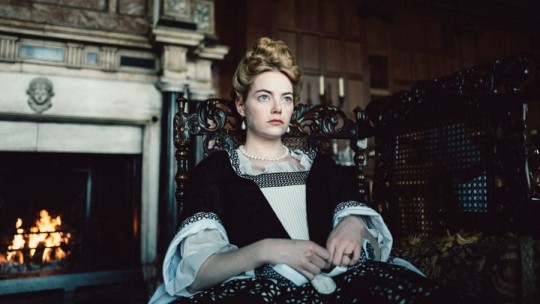
This completely wowed me - it features a trio of magnificently compelling female characters (played by Olivia Colman, Rachel Weisz and Emma Stone) operating at the court of Queen Anne (Colman is Anne, Weisz and Stone are courtiers), and is focused solely on the shifting sands of the power dynamics between them. The script is savage without sacrificing poignancy, witty without ceasing to be genuine. And while I’ve seen some react to this film as a comedy (and it certainly has laughs, most of which are closely tied to shock), for me it was very clearly a drama about the inscrutable and complicated relationships that exist between women. Specifically, it is about how those relationships run the gamut from sincere affinity to ruthless manipulation. This is an amazing movie, and it also has the best use of an Elton John song in 2019 (sorry, Rocketman!).
2. Midsommar, dir. Ari Aster

I went into this film with reservations, since I wasn’t a huge fan of Hereditary (by the same director), which I found to have extraordinary moments but iffy execution overall. This movie, however, wowed me, and I am still uncertain as to whether this or The Favourite is my top film of 2019 so far (fortunately, this gives me a good excuse to watch Midsommar three or four times in cinemas). While marketed as a freaky cult horror film, the director has described it as a fairy tale, which is the level on which is spoke to me. Midsommar follows Dani (an incredible Florence Pugh), a young woman who has suffered a terrible loss, as she travels with her boyfriend and his friends to a pagan festival in the Swedish countryside. Dani is painfully isolated, and her grief is hers to shoulder alone since her boyfriend is un-receptive and distinctly unprepared to help her. Over the course of the film, destruction and creation are conflated in ways that are frequently beautiful and horrific at the same time - this film spoke to me on a profound level, and the way it ended gave me a sense of incredible catharsis. This won’t be for everyone, for I found it to be a deeply special film and I can’t recommend it enough.
3. One Cut of the Dead, dir. Shinichirou Ueda
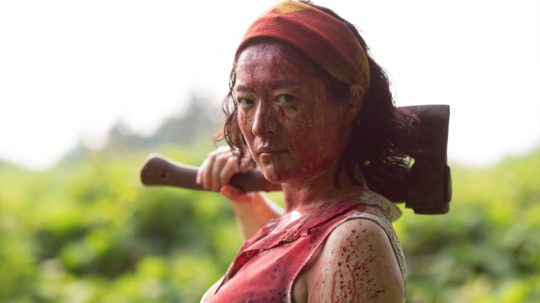
While I went into The Favourite with high expectations given the talent involved, I went into this with no expectations whatsoever - and what a treat it was! One Cut of the Dead is easily one of the funniest movies I’ve seen in ears, taking what initially seems like a trite concept (a crew is filming a zombie movie at a desolate location ... only to discover that the zombies are real!) and twisting it in a truly ingenious way. The comedy is often of the broad variety, but it is consistently delightful and always manages to avoid becoming crass - the movie even has some really sweet family dynamics at the centre of it, which gives it some real emotional heft. The success of this film is heavily reliant on a major twist that occurs part-way through, so the best advice I can give you is to stay as far away from spoilers for this one as possible - go in blind, and you will be amply rewarded for your faith.
4. The Farewell, dir. Lulu Wang
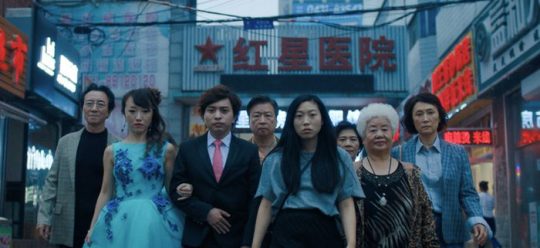
I saw this following a wave of festival hype, so while I was excited I was also a bit apprehensive (since I have been burned by the aforementioned festival hype before). Thankfully, my doubts were blown away as this turned out to be just as wonderful as the early reviews had suggested. It’s a personal story about a young Asian-American woman (Awkwafina) struggling to reconcile her heritage with her current situation and values - specifically, she is tested when her grandmother is diagnosed with terminal cancer and the wider family make the decision to hide the truth from her. The Farewell does a fantastic job of generating empathy for all the different perspectives and positions in play, but it’s truly anchored by Awkwafina’s amazingly nuanced and tender performance - basically, anyone who’s ever loved a grandparent should leave this feeling incredibly moved and inspired. The themes of The Farewell are both specific to the Asian-American experience and general to anyone who has struggled with maintaining bonds over a vast distance, whether physical or cultural.
5. Booksmart, dir. Olivia Wilde
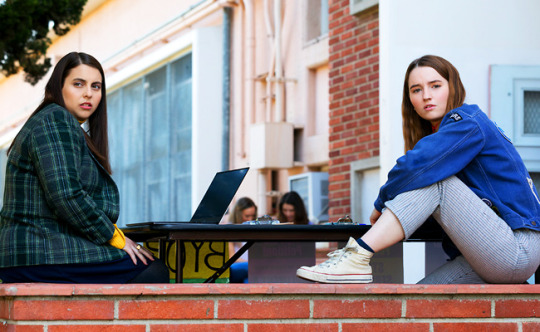
God, how I wish I’d had this movie as a teenager! While Booksmart has a cliched premise - two high-achieving teens decide to have one wild night before graduation - it tells the story in an incredibly charming and impressively creative way (I won’t spoil it, but let me just say this - that scene with the Barbies!). As someone who was an awkward nerd with no discernible social life in high school (as you Americans call it), I found this portrayal of that peculiar limbo period very sensitive and thoughtful - it doesn’t mock or shame its heroines for being studious, and it allows them to have limits and step back from situations that make them uncomfortable. It also serves as a beautifully honest portrait of a friendship, depicting the qualities that bring people together in friendship together in the first place, as well as the forces that can break people apart. This is a very accomplished debut from Wilde, and it makes me very excited to see where she goes next as a director.
6. A Private War, dir. Matthew Heineman

This was a very suspenseful and tightly focused film about an extraordinary woman, and the film soars on the strength of Rosamund Pike’s incredible performance as Marie Colvin. She provides piercing insights into the psyche of a person so driven to pursue truth and enact change that she loses all concern for her own wellbeing - it’s simultaneously a portrait of heroism and obsession, and it’s impressive for how it handles the ambiguity inherent in Colvin’s choices. She’s exceptionally brave, but the film is unflinching in depicting the costs of her bravery. It left me feeling inspired to learn more about Colvin’s life and work, and I still need to watch the documentary Under the Wire to get more insight into the real story behind the film.
7. Fighting With My Family, dir. Stephen Merchant

This is the year of Florence Pugh - she killed it in Midsommar, and she is just as fantastic here. If anything, Fighting With My Family and Midsommar make great complements as they serve as fantastic showcases for Pugh’s range as an actor. While her character in Midsommar is fragile and vulnerable, Fighting With My Family is a platform for her strength and comedic skill. As Paige, Pugh is instantly likable and compelling - I don’t give a damn about any form of wrestling, but this film (and Pugh specifically) did a fantastic job of drawing me in and making me root for Paige’s struggle to prove herself as a legitimate force in wrestling. This is a real underdog story, and Pugh did a wonderful job as the Cinderella of the WWE.
8. Apollo 11, dir. Todd Douglas Miller
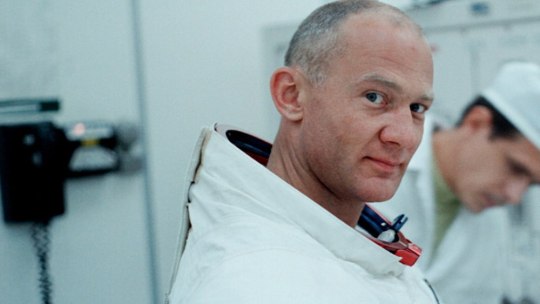
My dad has always been crazy about the space program, but I hadn’t picked up the bug myself. That changed after I watched this extraordinary documentary, which brought the Apollo 11 mission to vivid life. The footage that’s used for this documentary is extraordinarily crisp, and some moments are vividly powerful - the crew getting into their spacesuits, the swirl of fire surrounding the moment of takeoff, and the journey of the spacecraft towards the moon. It left me feeling moved and touched by human potential, especially when you remember that this all happened 50 years ago when the available technologies were so fragile and primitive. I also loved how the footage was allowed to speak for itself, with no voiceover or exposition - it’s a must-see for anyone who’s ever looked up at the stars and wondered about reaching them.
9. High Life, dir. Claire Denis
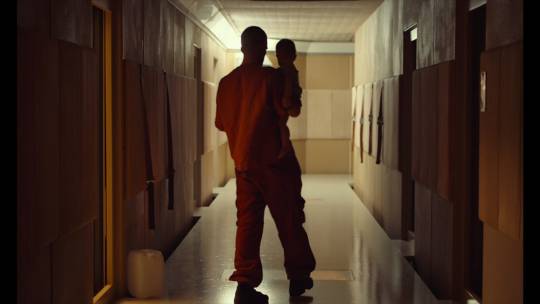
This movie is second to only Midsommar in terms of how weird it is. I saw this in a Hungarian cinema while on holiday, which made for a disorientating experience in itself. While the meaning of the film is quite elusive and I’m sure that many people will find viewing it a uniquely frustrating experience, I appreciated how it created a hothouse environment that brought out some of the ugliest aspects of humanity. Robert Pattinson was great as what comes closest to amounting to our protagonist, though he is as inscrutable and inaccessible as the film itself. I can’t quite pin down why I liked this one so much, but I know I did and it made me want to seek out more of Claire Denis’ work.
10. Free Solo, dir. Jimmy Chin & Elizabeth Chai Vasarhelyi

It’s tragic that most people will only watch this documentary on a TV screen (or, so much worse, a laptop!). I was fortunate enough to see it in its full IMAX glory, and it’s rare to see any film - let alone a documentary - take such full advantage of the format. The woozy spectacle of this film is the real star, though the subject - mountain climber Alex Honnold - is also fascinating with his unnerving detachment from the magnitude of what he is setting out on. It is clearly a necessary detachment for him to be able to achieve what he achieves, but I appreciated how the filmmakers questioned it and explored its impact on his girlfriend. This is a compelling documentary, and is worth watching even if you’re not usually a fan of the genre.
#films#cinema#films 2019#midsommar#florence pugh#the favourite#one cut of the dead#free solo#high life#apollo 11#fighting with my family#a private war#the farewell#booksmart
2K notes
·
View notes
Text
Tainá Müller, leading actress of “Good morning, Veronica” prepares for season 2

by Paula Calçade | jan 1st, 2021 | Interview
One of the most watched series in 2020 on Netflix features a well-known storyline of foreign crime movies; a murderer abducts, tortures and kills women. The year that has not ended has brought many reflections and mobilizations on social networks, but perhaps one of the themes of the long months - in addition to Covid-19 - has been feminism. From the banner defended in Big Brother Brasil by the participants of the last edition to the motor to denounce sexual abuse in the largest broadcaster in the country, women were active in the past year. And “Good Morning, Veronica” opened the various layers of this violence on the streaming screens. “It is an open wound, I knew the responsibility I had in leading a plot like this”, says Tainá Müller, Veronica of the series.
The Gaucho actress was aware that the production would generate debate. "I was surprised and happy that the repercussion was really great, the unfolding in social networks, in different groups, was huge", she remembered. In an interview from her home - now away from the recording sets and in isolation with her family - Tainá sees feminism as a true revolution. "It is the cure for imbalance, it is equality through respect!"
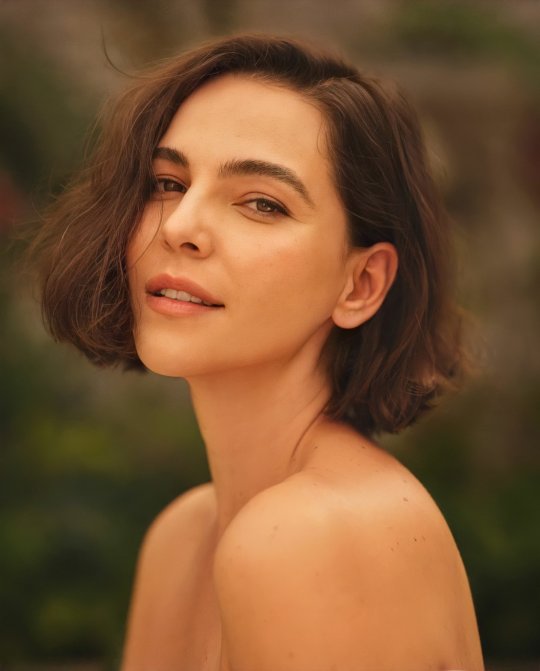
PHOTO BY GUSTAVO ZYLBERSZTAJN
“Good Morning, Veronica” is the adaptation of the book of the same name, by Ilana Casoy and Raphael Montes. The plot follows the journey of the police clerk Verônica Torres to find a criminal, and seeks justice for a victim of domestic violence, played by Camila Morgado - who impresses once again for her impeccable performance. Tainá Muller brings the experience of interpretation in police narratives that started in “Elite Squad 2”, when played a reporter in José Padilha's film, 2010. “At the time, I met many people from Bope, I learned that doing these labs is important.”
As in the film starring Wagner Moura, the plot of “Good Morning, Veronica” is also not easy to digest; physical and psychological violence unfolds in subtle and striking scenes. But the identification with the setting of the series, which takes place in São Paulo, makes the episodes to be seen even faster. Vale do Anhangabaú, Marginal Pinheiros and Tietê bus station are scenarios that make everything even more real.

Tainá Müller playing the police clerk Veronica Torres – PHOTO BY SUZANNA TIERIE | NETFLIX
The city has also been the home of Tainá Muller since 2000, when she arrived in the country's largest metropolis at the age of 18. “It was the first time I took a plane in my life, I came to do the trainee at MTV, and soon I felt embraced by the nightlife and cultural life of São Paulo”, she says. I agitate that it misses a lot in pandemic times. “I've always been to concert a lot and that's how I met my husband (director Henrique Sauer), we missed these agglomerations, as well as missing my trip to Rio Grande do Sul and meeting my family.”
Like all of us, the pandemic went through Taina's life, changes that took her back to the couch, after years away from therapy. “I still cannot name the many transformations that 2020 brought me, I am elaborating everything in the analysis, but I already see how it is almost an obligation for those who could stay at home, safely, to develop a critical and sensitive look at what we are going through”, analyzes.
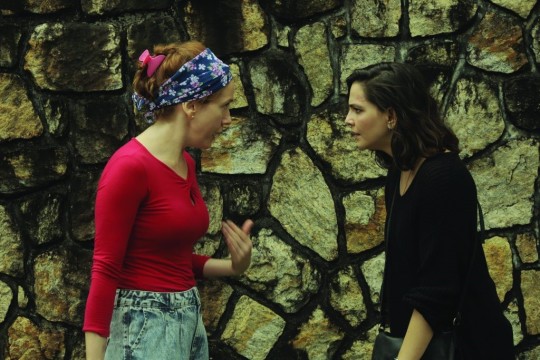
Tainá as Veronica and Camila as Janete, in the “Good Morning, Veronica” series – PHOTO BY SUZANNA TIERIE | NETFLIX
The post-graduate course in Philosophy, which the actress - graduated in journalism and former VJ of MTV - ends at a distance in quarantine, further sharpens Tainá's senses. "I am almost 40 years old, it is time to put on the scale what really matters in life, the readings of this course make me reflect a lot."
Courage that comes from home
With a intense theme, "Good Morning, Veronica" demanded a lot from the actress, including physically. “I did shooting exercises, I followed the daily life of a clerk in Rio de Janeiro, who went up in communities for operations, a routine that also has a different meaning for the women who are part of it”, she points out. "I remember one day she was colic, but she needed to get the rifle and accompany the team, it was amazing, it's about being a woman in a war zone."
To rest from these immersions and the recordings of the series, Tainá tried to maintain a family routine close to her son, Martin, then three years old. “I prepared for two months, I filmed in four, it was very intense and I was away from home, I wanted to make up for it”, she reflects. A situation similar to the life of the character she plays, Verônica, and many other real Brazilian women, who are divided between work, home and children.
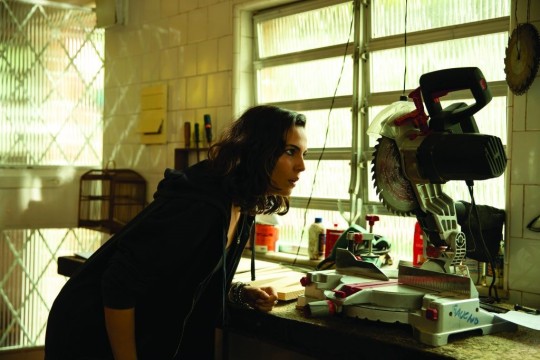
Tainá Müller playing the police clerk Veronica Torres – PHOTO BY SUZANNA TIERIE | NETFLIX
From her first family, the actress says she brings the courage and the gas to follow dreams without strings attached. “My parents raised their three daughters (she and the sisters Titi and Tuti Müller) to fall into the world, I didn't have this pretension that we would get married, it was more to follow our dreams, whatever they were”, she remebered. "I also think it has to do with the courage that the people of Rio Grande do Sul have, I see a lot that we are created to not give up and persevere, we have brought this a lot throughout history, I bring it with me today", she analyzes.
Multifaceted and prepared
With a blonde wig, a low-cut black dress and the characteristic birthmark of Marilyn Monroe on the face that Tainá Müller was on the stage of a theater for the last time before the pandemic, in the play “Os Desajustados”, written by Luciana Pessanha, directed by Daniel Dantas. The show took place in Rio de Janeiro in 2019. The plot involved a meeting of the Hollywood star with playwright Arthur Miller (Isio Ghelman), actor and singer Yves Montand (Felipe Rocha) and actress Simone Signoret (Cristina Amadeo), in 1960 at the Beverly Hills Hotel in California.
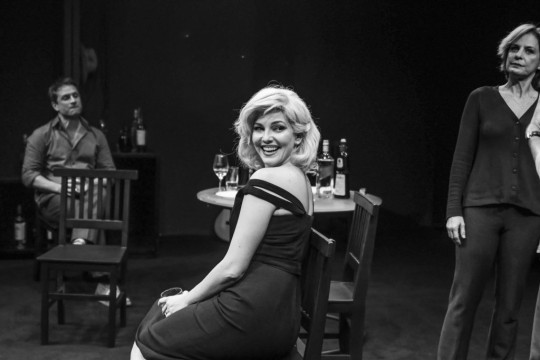
Tainá Müller as Marilyn Monroe in the play “Os Desajustados” – PHOTO BY MANU TASCA
“Marilyn is a character of any actress's dreams: complex, multifaceted, tragic. It was very challenging to embody her, because everyone has your own Marilyn, loves her in some way, already knows something about her life”, she reflects. “I miss the theater, I think about doing a solo play soon.”
Alone or surrounded by other actors, 2021 reserves a lot of work for her. In recent months, Netflix announced the second season of the series “Good Morning, Veronica”. "We will film as soon as the vaccine comes out," says Tainá. While we wait anxiously for the most desired item in the world, the actress is already physically preparing to live again the police clerk Veronica Torres. "I exercise, I started boxing classes," she says. "I need to be prepared, because this year will be intense, I want to move!"
This paper is a free translation of Tainá Müller's interview. All rights reserved to 29 HORAS magazine.
2 notes
·
View notes
Text
Analysis: Female directors are having a moment
New Post has been published on https://appradab.com/analysis-female-directors-are-having-a-moment/
Analysis: Female directors are having a moment
In the year of our Lord 2021, it feels like female directors are finally getting more opportunities — and more acknowledgment.
Take, for example, this past Sunday’s Golden Globe Awards.
Three women were nominated in the best director category for the first time.
Only one woman had ever won the category prior to Sunday, and that was Barbra Streisand in 1984 for “Yentl.”
Here are some of the women who are making waves and headlines in Hollywood:
Chloé Zhao: The “Nomadland” director became the first woman of Asian descent and only the second woman ever to win the best director award at this year’s Golden Globes.
The film’s star, Frances McDormand, told The New York Times Zhao really understood the actress’ affinity for the character who packs up her life in a van and becomes part of an older community of people who work odd jobs across the country.
“Chloé tapped into the truth of it which was at different points of my life, I’ve said to my husband, ‘I can’t take this anymore, I’m dropping out,'” McDormand said.
Regina King: The acclaimed actress-turned-director was up against Zhao at the Globes.
She has been on quite a streak in her career the past few years, including nabbing the best supporting actress Oscar for “If Beale Street Could Talk” in 2019.
Now, the former child star is being hailed for her big screen directorial debut in “One Night in Miami,” adapted from Kemp Powers’ stage play about a meeting between Cassius Clay, Jim Brown, Sam Cooke and Malcolm X.
The night of the Golden Globes, King told “E!” it was “bittersweet” that she, Zhao and Emerald Fennell marked the first trio of female nominees, given that this is 2021.
Emerald Fennell: Another actress who has stepped behind the camera (we are starting to see a trend here), she has received critical acclaim for writing, directing and producing the thriller “Promising Young Woman,” starring Carey Mulligan.
The movie is not only cheeky but gets into some uncomfortable territory, so much so that it has been praised for turning the revenge genre on its ear.
“It’s just part of the fun of making something, the smoke and mirrors and the misdirections,” Fennell told IndieWire. “I love all that stuff, all of my favorite movies have that sort of thing in them. It’s very interesting, isn’t it, how much we want violence, how much instinctively as an audience we’re begging for blood.”
Robin Wright: “The House of Cards” star did some directing on that Netflix series, so she wasn’t a total neophyte when it came to both starring in and directing her first feature film, “Land.”
Wright plays a woman struck by a family tragedy who gives up her successful life in the big city and moves to a remote area in Wyoming.
She told Women’s Wear Daily that she was delighted with the film’s reception so far.
“We feel so blessed that people are feeling the movie,” Wright said. “It is very relevant to what’s going on today, of being disconnected from our loved ones. We’re not living the norm. The message in this movie is about that very thing.”
These leading female directors represent just a handful of creatives proving women are making inroads on the Hollywood scene.
The numbers don’t lie: For the second consecutive year, the percentages of women directing top-grossing films increased, reaching “recent historic highs,” while the overall percentages of women working in key behind-the-scenes roles remained relatively stable, according to a study by San Diego State University released in January.
“Women accounted for 16% of directors working on the top 100 grossing films in 2020, up from 12% in 2019 and 4% in 2018,” wrote study author Martha M. Lauzen, founder and executive director of SDSU’s Center for the Study of Women in Television and Film. “Women comprised 18% of directors on the top 250 films in 2020, up from 13% in 2019 and 8% in 2018.”
A rising tide raises all ships, especially when a woman is at the helm, so here’s to more female directors on the horizon.
For your weekend
Three things to watch:
‘Coming 2 America’
Prince Akeem and Semmi are heading back to Queens, New York. Eddie Murphy and Arsenio Hall reprise their respective roles for the sequel to the hit 1988 film.
This time the prince is in search of his son and heir to the kingdom of Zamunda. My question is what have the rose petal droppers been up to all this time?
“Coming 2 America” starts streaming Friday on Amazon Prime.
‘Boss Level’
Former special forces agent Roy Pulver (Frank Grillo) is trapped in a time loop that constantly repeats the day of his murder. To break the cycle, he must hunt down Col. Clive Ventor (Mel Gibson) while also trying to save his ex-wife (Naomi Watts).
That sounds like some seriously fast-paced action.
“Boss Level” starts streaming Friday on Hulu.
‘Biggie: I Got a Story to Tell’
March 9 marks the 24th anniversary of the unsolved murder of rapper Christopher Wallace, aka Biggie Smalls or The Notorious B.I.G., at age 24.
Arguably one of the best and most beloved hip-hop artists of all time, Wallace is the subject of a new doc that looks at the legacy of his life and death. Currently streaming on Netflix, with “rare footage and in-depth interviews, this documentary celebrates the life of The Notorious B.I.G. on his journey from hustler to rap king.”
So, call your friends and let them know so your crew run-run-run, your crew run-run to catch it.
Two things to listen to:
Sweden has blessed us with the likes of ABBA and Spotify. Now add Zara Larsson to that list.
The 23-year-old singer, who got her start as a youngster on a TV talent show, is dropping her third studio album, “Poster Girl,” on Friday.
March is the month we celebrate women — and who is more empowering than Oprah Winfrey?
The answer to that is no one.
Check out “Oprah’s SuperSoul Conversations” podcast if you want to feel motivated, inspired or just need the uplifting vibe that is trademark Oprah.
One thing to talk about:
Are we over awards shows?
My Appradab colleague Brian Lowry reported that “Globes ratings plummeted more than 60% from the 18.3 million viewers who watched last year, per Nielsen data, to an average audience of 6.9 million.”
Yikes.
With the pandemic going on you would think plenty of people would be tuning in to shows like the Golden Globes, but, apparently, not. Even in a “normal year,” there seems to be less enthusiasm for award shows than there used to be, and that begs the question if Hollywood needs to find a different way to celebrate the industry.
The pandemic is causing us all to reevaluate things.
Something to sip on
Looking for a new show to watch? We asked some of our friends around Appradab what TV binge has helped them decompress in the time of Covid.
Phil Mattingly, senior White House correspondent
I basically have an encyclopedic knowledge of Bravo shows due to my wife’s fandom/the disappearance of sports the first few month of Covid. Not sure I should acknowledge that publicly.
Alisyn Camerota, Appradab New Day anchor
I’ve been watching “Succession.” It depicts a dysfunctional, rotten world, and somehow I find that soothingly distracting from our daily stress.
Stephanie Elam, Appradab correspondent
Fantasy, take me away! I’ve turned to shows that allow me to escape reality — “Once Upon a Time” with my daughter, “Lovecraft Country” and “His Dark Materials” without her.
Ana Cabrera, Appradab Newsroom anchor
“Criminal Minds” on Netflix. I know it’s old, but I’m a newcomer to it! I’m a sucker for mystery and suspense.
Pop back here next Thursday for all the latest entertainment happenings that matter.
3 notes
·
View notes
Photo

Siren Song.
Undine writer-director Christian Petzold talks to Reyzando Nawara about modern-day mermaids, Tinder culture and finding the magic in life.
“Love stories always change. A kiss in Berlin 1933, for example, is not gonna be the same kiss in Berlin today, right?” —Christian Petzold
“If you leave me, then I’ll have to kill you.” Undine’s threat to her soon-to-be ex-boyfriend Johannes, after he has told her that he has met someone else, seems at first like an over-the-top reaction to the breakup. But it is a curse that Undine must fulfill, for she will become human only when she falls in love with a man who is doomed to die if he is unfaithful to her.
From Splash to Ponyo to The Lure to Song of the Sea, mythical water spirits, usually female, sometimes horse, have powered many film plots. The sixteenth-century European myth of Undine, in particular, lies behind many screen adaptations of Hans Christian Andersen’s The Little Mermaid, though the Danish writer was not the first to popularize the fairytale in his century. Decades earlier, around 1811, Friedrich de la Motte Fouqué of Germany had produced his romantic novella, Undine.
And it is to Germany—specifically modern-day Berlin—that writer-director (and fellow German) Christian Petzold transports Undine in his contemporary magical-realist take on the myth. There, she does not take the form of a mermaid or siren, but a beautiful young woman (played by Paula Beer), who works as a historian at a museum, where she guides tours of Berlin’s architecture and its reconstruction. The breathtaking cinematography, by regular Petzold collaborator Hans Fromm, crystallizes both the romance and the beauty of Berlin, while Petzold’s leads root every scene in reality, even as aquariums explode and giant catfish drift past.
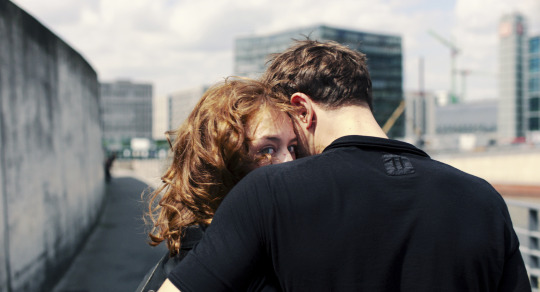
Paula Beer and Franz Rogowski fire up the streets of Berlin in ‘Undine’.
Water may be the dominant element in Undine, but Beer and her co-star Franz Rogowski bring fire to their scenes together. Where Beer brings charisma and intensity to the titular role, Rogowski, as Undine’s new love interest, an industrial diver named Christoph, offers charm and sweetness.
In the frenzy of Parasite’s world domination, it is easy to forget that Petzold’s previous feature, Transit, appeared in two of our 2019 Year in Review lists—the 50 highest-rated films and the highest-rated international films—and was one of the top romance films of the 2010s. His riveting Phoenix is still his highest-rated film on the platform—one of many to center a complex female character in search of love at a time of personal and/or political crisis. In Undine, Petzold does it again, a welcome departure from other adaptations, including the Colin Farrell-starring Irish romantic drama Ondine (2009), that have mostly told the myth from the perspective of its male characters. Petzold also revises the fairytale, by giving Undine a chance to try to emancipate herself from her curse.
We recently had the pleasure of speaking with Petzold about his fascination with water, the magic of Berlin history, modern dating and of course, his ongoing collaboration with Beer and Rogowski.
Spoiler warning: this conversation contains plot details regarding the ending of Petzold’s film ‘Transit’ (2018).

Your movie is inspired by the myth of Undine, but you reinvent it by giving it some modern twists. How did the main narrative for the film come about?
Christian Petzold: I think the idea of the story first came to me around twenty years ago when I had a project in Germany. It was together with Claire Denis and also Kathryn Bigelow, and everybody had to make a ten-minute short film for a project based on the museum near the Rhine River. I had written a little dialogue—oh, by the way, Steve McQueen was also part of the project—and it was the scene that we can see in the movie in the first few minutes where Undine’s boyfriend, Johannes, said that he doesn’t love her anymore and that he wants to leave her and she said to him, “If you leave me, then I’ll have to kill you.” Then she goes back to work, and later when she comes back to try to find him again, he isn’t there—so she knows that she has to kill him now.
Then when I made Transit with Paula Beer and Franz Rogowski, I told them after a very lucky and happy time of shooting, that I had written a short story and wanted to make a 90-minute feature movie out of it together with them. I wanted to keep working and making movies with them because we’ve had an amazing experience together in Transit. This was basically the start of how the movie and my collaboration with these two actors came about.
Paula and Franz are actors who didn’t come from the basic German acting school; their backgrounds are dance and theater. But they both have so much curiosity about cinema—when I met Paula for the first time, for example, she told me that she had bought 50 movies by Alfred Hitchcock and wanted to see all of them, and to me, this is the best kind of school to learn about cinema.
So to some extent, Undine is a spiritual sequel to Transit?
Yes, you’re right. It has so many things to do with Transit. Marie, Paula’s character in Transit, finds her own death in the sea—she’s drowned. And Franz’s character, he’s waiting at the land, hoping that she may come back from the land of the dead. So I said to them, “Okay, the next movie is gonna be about a woman coming out of the sea and going to the land to search for love and also about this young man who is a diver, who is going underwater, to find love as well.” So to some degree, it’s a sequel, you’re right.
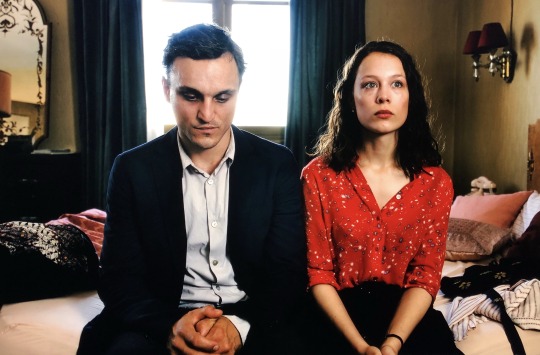
Beer and Ragowski in ‘Transit’ (2018).
You mentioned earlier that you had a great experience working with Paula and Franz in Transit. Can you tell us what it was about these two actors that you thought would capture the story you wanted to tell in Undine?
Paula is a very young actor—she was 23 when we started Transit, and she was around 24 when we made Undine—but when you’re filming her, she has this ability to make her characters much more mature beyond her real age. In one second, she’s 45 years old, with a whole experience of someone who’s had a hard life and has gone through so many bad things, then one second later, she’s thirteen and innocent. And to have that kind of ability—to go from one point to another—is just really fascinating to me. I’ve never seen other actors do this before in my life.
Franz was a dancer, and if I remember correctly, I think he was also in a clown school for a circus, so he can do everything with his body. It’s unbelievable what he can do. He has this amazing physicality that I admire and haven’t seen before in other German actors. When they’re together sharing a scene, they dance with each other. And this is the thing that I like so much about them and the thing I need in Undine, because I need actors who can float from one scene to another as if they’re dancing underwater.
In literature and pop culture, the myth of Undine has been mostly told from the male perspective. You reframe the narrative, to give Undine the opportunity to maybe emancipate herself from both the male figure in her life and the curse. Tell me more about that choice.
Two or three years ago, I had a retrospective in New York, and I had the chance to see some of my previous movies again—[laughing] I’ve actually never done it before, revisiting my own movies. And at that time, I realized that I’ve always tried to rewrite the stories centering on women, which were made by men in the ’40s, ’50s, ’60s and ’70s, from another perspective: the perspective of the women.
When I was in Venice for the first time, Claude Chabrol [was] in the same hotel as me, and he had a Q&A. I wanted to say hi and tell him how great he was but I couldn’t do it because I was very young and too shy for those things. I heard what he said when asked why in his movies, the women are always the main characters. His answer was, “Men are living, women are surviving. And cinema is about surviving.” It was such a fantastic answer.
All the movies I [have] made, including Undine, are about surviving. Undine wanted to survive her curse—she tries to, every time, since centuries ago. In so many iterations of the myth, Undine always has to go back into the lake and to the life the curse has set for her. I really wanted to zoom in on that, to liberate the character of Undine from the myth and the curse.
In the movie, Undine works as an historian at a museum, and in her tours, she talks about Berlin’s architecture and its reconstruction throughout the years. How is this related to the romantic aspect of the movie?
Everybody says you can take a love story and put it in the sixteenth century or the nineteenth century, and it’s always gonna be the same kind of love story. But I think that’s not entirely right. Love stories always change. A kiss in Berlin 1933, for example, is not gonna be the same kiss in Berlin today, right? Therefore I want to take the historical aspect of Berlin architecture and its reconstruction to tell the story of two young people in Berlin nowadays, to see the evolution of both this love story and the myth of Undine itself.

What’s the significance of all the buildings Undine mentions in the movie?
The buildings serve a very important role in the movie because Berlin is between two rivers on an island, and the city is built on dried-out swamps, so the element that Undine is coming from, which is the water, is destroyed in Berlin. It doesn’t exist anymore. And therefore Undine doesn’t have any habitats, so she has no choice but to adapt and to live on the land.
In some way, I always think that the modernization in Berlin erases history, and when there’s no history, there’s no magic, which means magical creatures like Undine won’t exist. That was the main idea of the architectural elements in the movie.
Is that also the reason why there are two locations in the movie: Berlin, and the small town where Franz’s character, Christoph, works and lives, which is still full of swamps? To show that in this small town, magic still exists?
That’s a good question. The romance and the myth of Undine is a part of German and European history. It’s a unique enchantment. But in Berlin, where modernization and civilization keep growing and changing, there’s no enchantment anymore. So I want to show how in this small town where everything is still kept as closely natural as possible, the enchantment and the charm of Germany are still there.
There’s a beautiful and romantic poem by Joseph Eichendorff that says, “You must find the right world, so everything can sync again.” To me, that line encourages us to find the magic of the world back. We live in this world surrounded by retro buildings and retro behavior and retro music, but it’s all actually just an illusion of magic. The real magic, that’s something that we have to find—either by movies or camera positions or poems or even by preserving the naturality of a city. And the Undine myth actually has a lot to do with this.
Another thing that fascinates me about the movie is how the dynamic between Undine and Johannes, in some way, reflects the state of modern dating. Is this something that you also wanted to capture when you wrote the script?
[Laughing] Funny story, when Paula read the script for the first time, she told me that she liked it so much because the story reminded her of Tinder and modern dating. And on some level, it’s true; part of Undine is about modern dating. I always think that in the era of dating apps, everything gets much simpler—you meet someone, you have sex (or perhaps not), and if you feel like this someone is not handsome or beautiful enough for you, you can keep scrolling until you find someone new. So, dating right now is like going to the supermarket.
Johannes leaving Undine to be with another woman, who for him is better-looking than Undine, reflects the culture of Tinder. And the line I mentioned earlier, “If you leave me, then I’ll have to kill you,” is the opposite of that kind of dating life. And Paula, who hates Tinder, loves that line a lot. Some of the actors are on Tinder, I’m sure, and that’s understandable. Actors are sometimes very lonely because for six to eight weeks, they are deep inside of a character, and when they’re on break, they’re in some sort of “black hole of loneliness”.
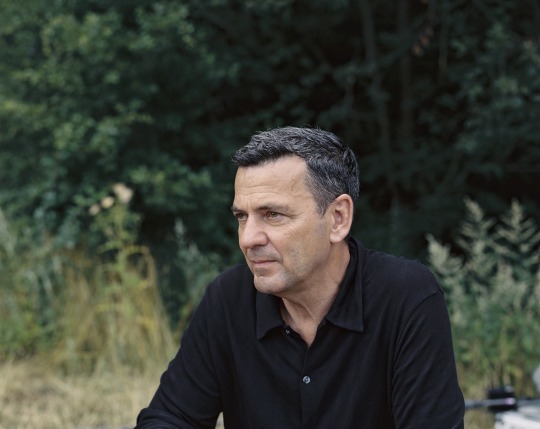
Writer-director Christian Petzold.
Undine being a water nymph, of course, makes the water element very important in this movie. But water has actually been heavily featured in some of your previous features as well, like in Yella, Barbara and Transit. Can you tell us why you find water fascinating?
I’ve seen a documentary by Agnès Varda, and in [it] she said, “The place where one element is touching one another is the place where cinema builds its stories.” That’s why she loved the beach, because on the beach, there’s water and there’s the earth and there’s also wind, and they’re touching each other. So to her, the beach is the perfect place where you can tell a story.
For me, however, the reason I like featuring water or the other elements in most of my movies is because it has something to do with seeing my characters coming from one element then going to the other elements; to see them act and react in a new and sometimes uncomfortable place. Also, when you see pictures or paintings, so many of them are about people looking deep into the sea. I always feel like that kind of painting is actually about a desire. And most of my movies, at [their] core, are about desire. That’s why water is so important to me. Deep under the water, there’s the place of desire.
What’s the first movie that made you want to become a filmmaker?
The first movie I loved very much as a kid was The Jungle Book, but the first movie that made me want to become a filmmaker was by Alfred Hitchcock, The 39 Steps. I was fourteen or fifteen years old when I saw the movie for the first time, and I loved it from the first moment. The movie is about a man and a woman who are bound by handcuffs, and they don’t like each other, but because they’re on the run, they have to communicate and come to an understanding. And the love story starts because of that communication, not because of looks, and I love the movie so much for that reason.
If you could program a double feature with Undine, what movie would you pick?
Good question. I would say The Night of the Hunter. Also maybe Creature from the Black Lagoon or 20,000 Leagues Under the Sea or The Son’s Room by Nanni Moretti. These are the movies that I would recommend for a double feature with Undine.
Related content
More ‘Little Mermaid’ adaptations: a list by Katherine
Paula Beer strolling around towns cinematic universe
Diogo’s mega-list of Mermaids in Film
Horror’s History with Scary Mermaids: a Bloody Disgusting list
Follow Reyzando on Letterboxd
‘Undine’ is in theaters and available on VOD in the US now.
#christian petzold#paula beer#transit film#undine#undine myth#ondine#water nymph#mermaids#mermaid film#german film#german director#german screenwriter#german cinema#cinema germany#romance#romance films#Reyzando Nawara#franz rogowski#letterboxd#filmmaker#letterboxd interview
24 notes
·
View notes